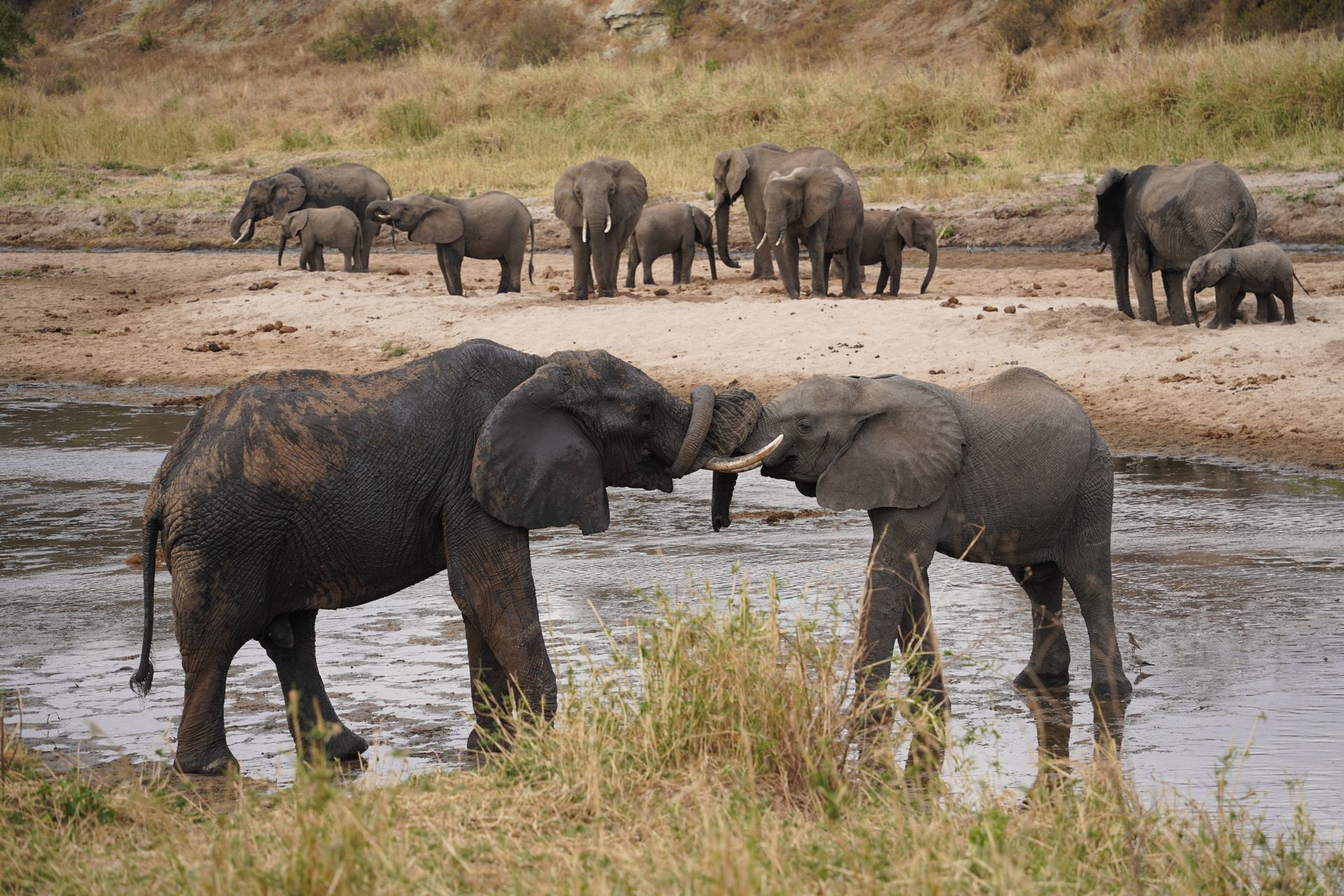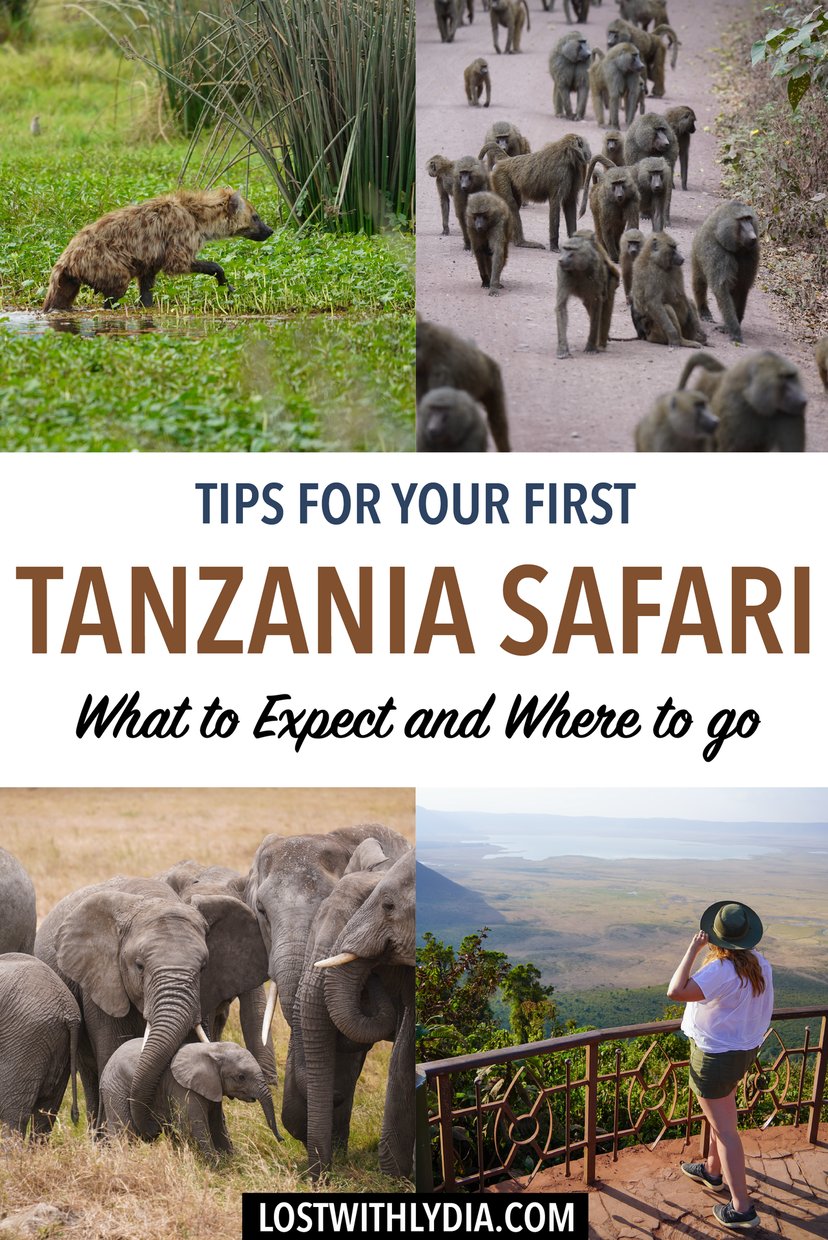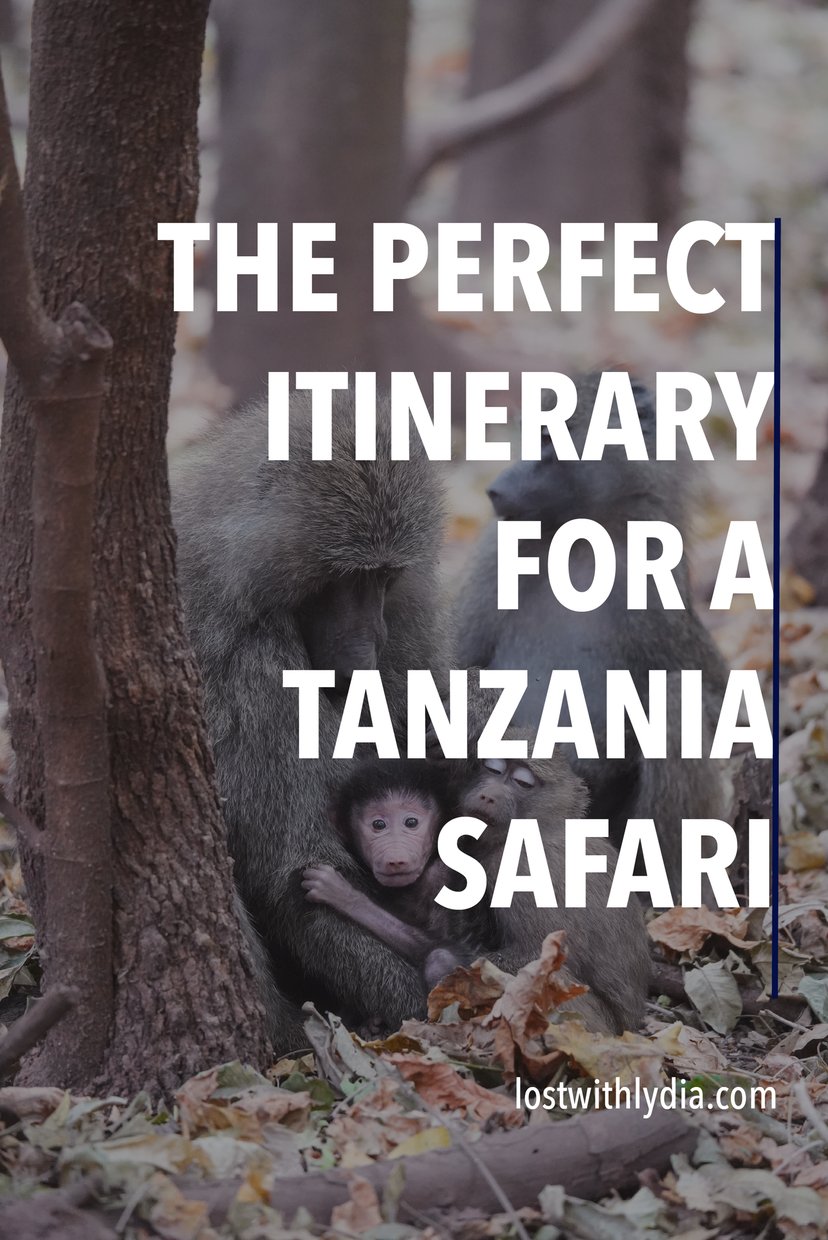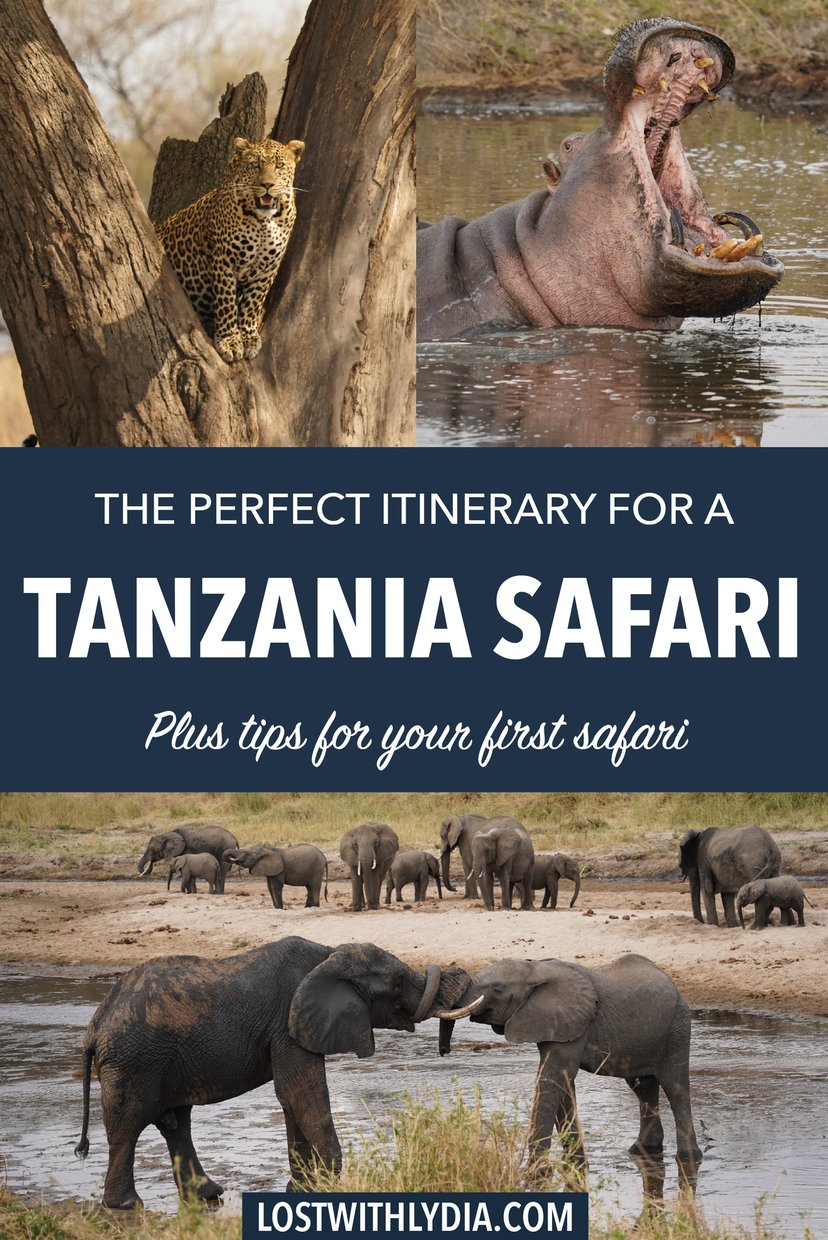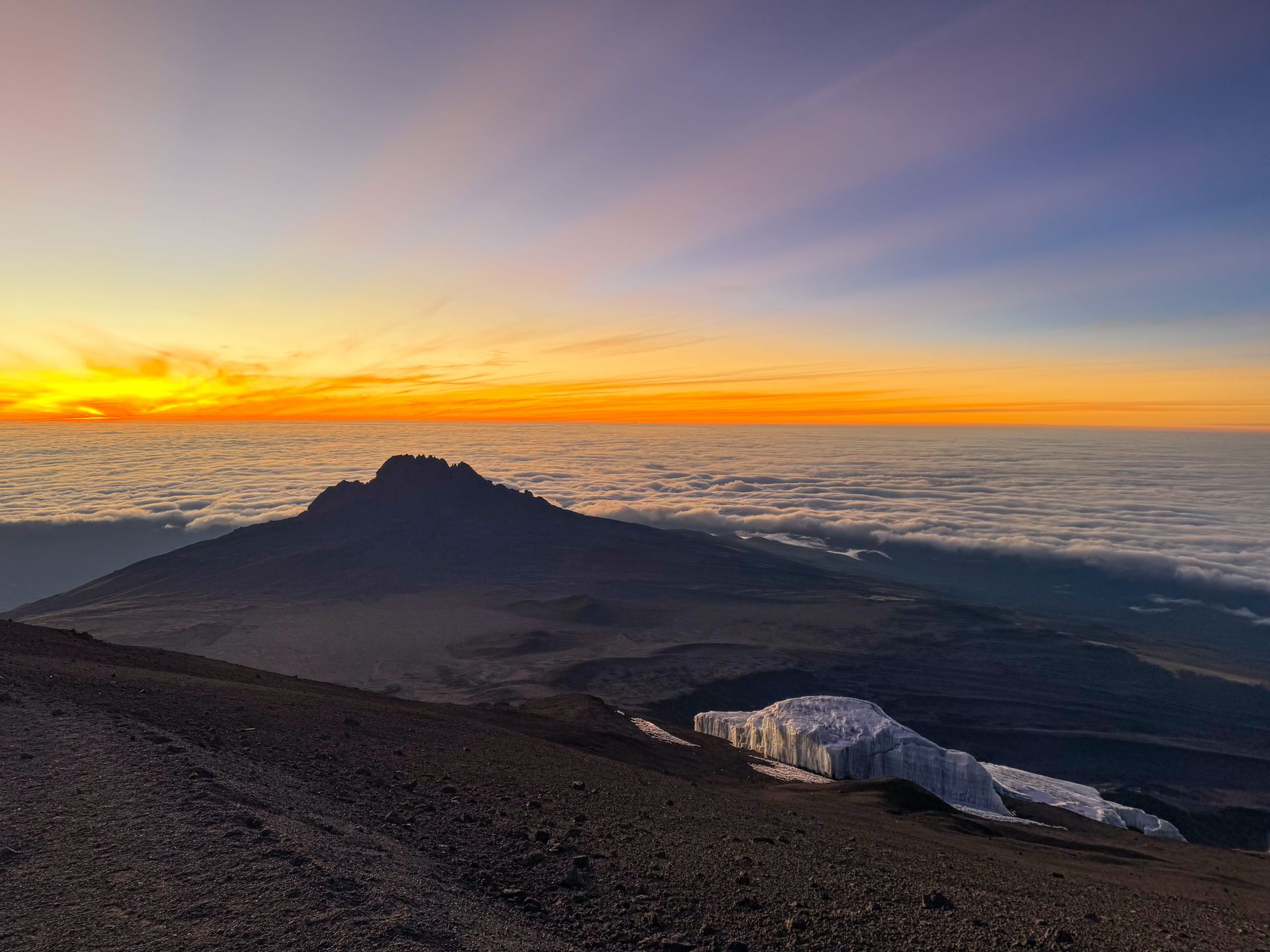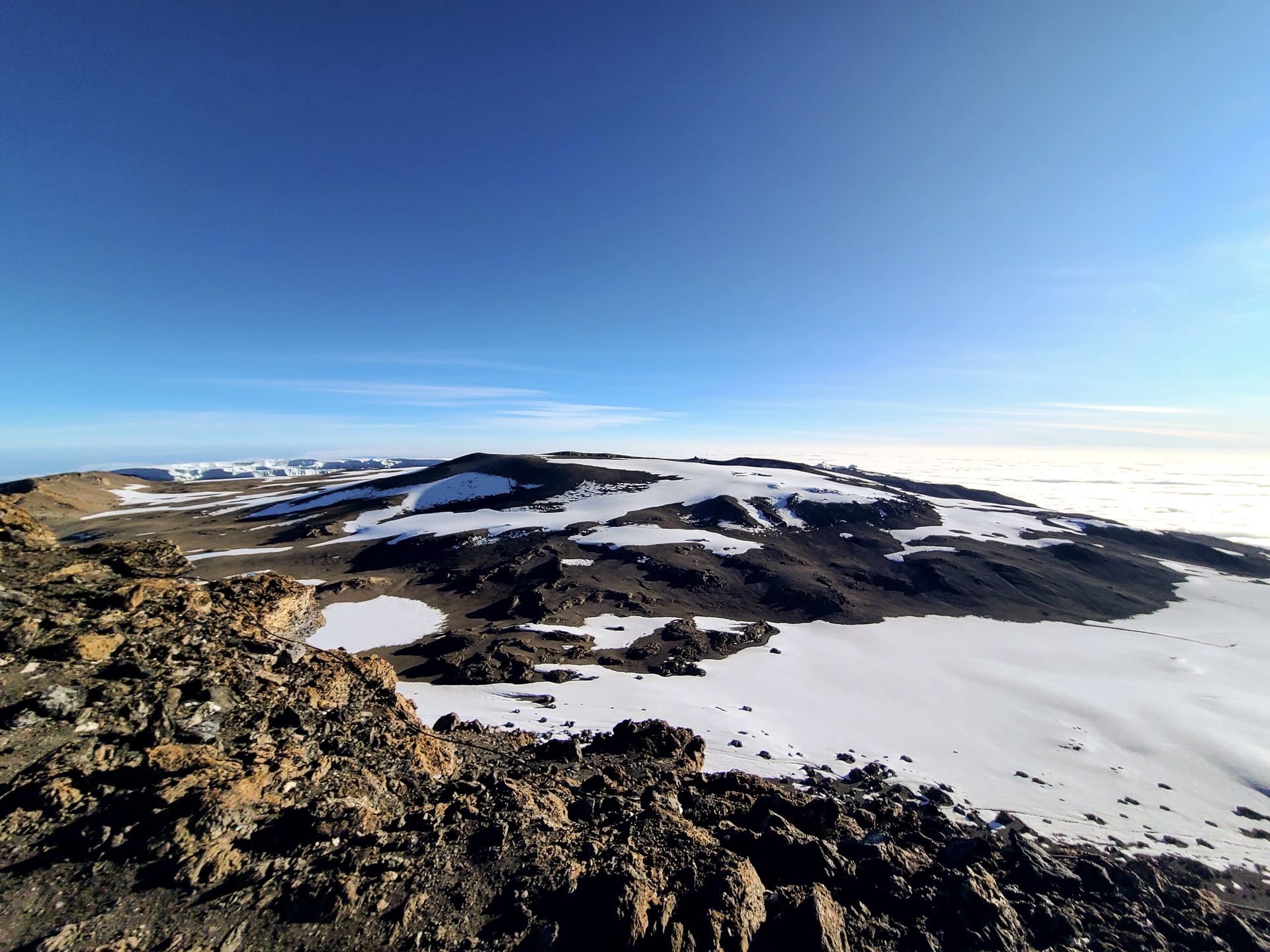An Epic Tanzania Safari Itinerary (Plus What to Expect on your First African Safari)
August 1, 2025
If an African safari is on your bucket list, you’re in the right place! If this will be your first safari, you won't be disappointed. It’s an incredible experience where you’ll get to see wildlife in its natural habitat. Whether it’s watching elephants spray themselves with water or baby baboons cleaning each other, there are so many incredible moments to be had.
During my safari in Tanzania, I not only saw the “Big 5,” but I saw a cheetah stalking its prey, lion cubs, a beautiful serval cat and countless zebras, hippos, gazelles, giraffes, and many more animals.
This guide offers tips and a great itinerary for your first African safari in Tanzania. I went on this trip with Shiri Adventures and had an amazing experience!
What to Expect on an African Safari in Tanzania
Here are FAQ’s and general information on what to expect on your first African safari.
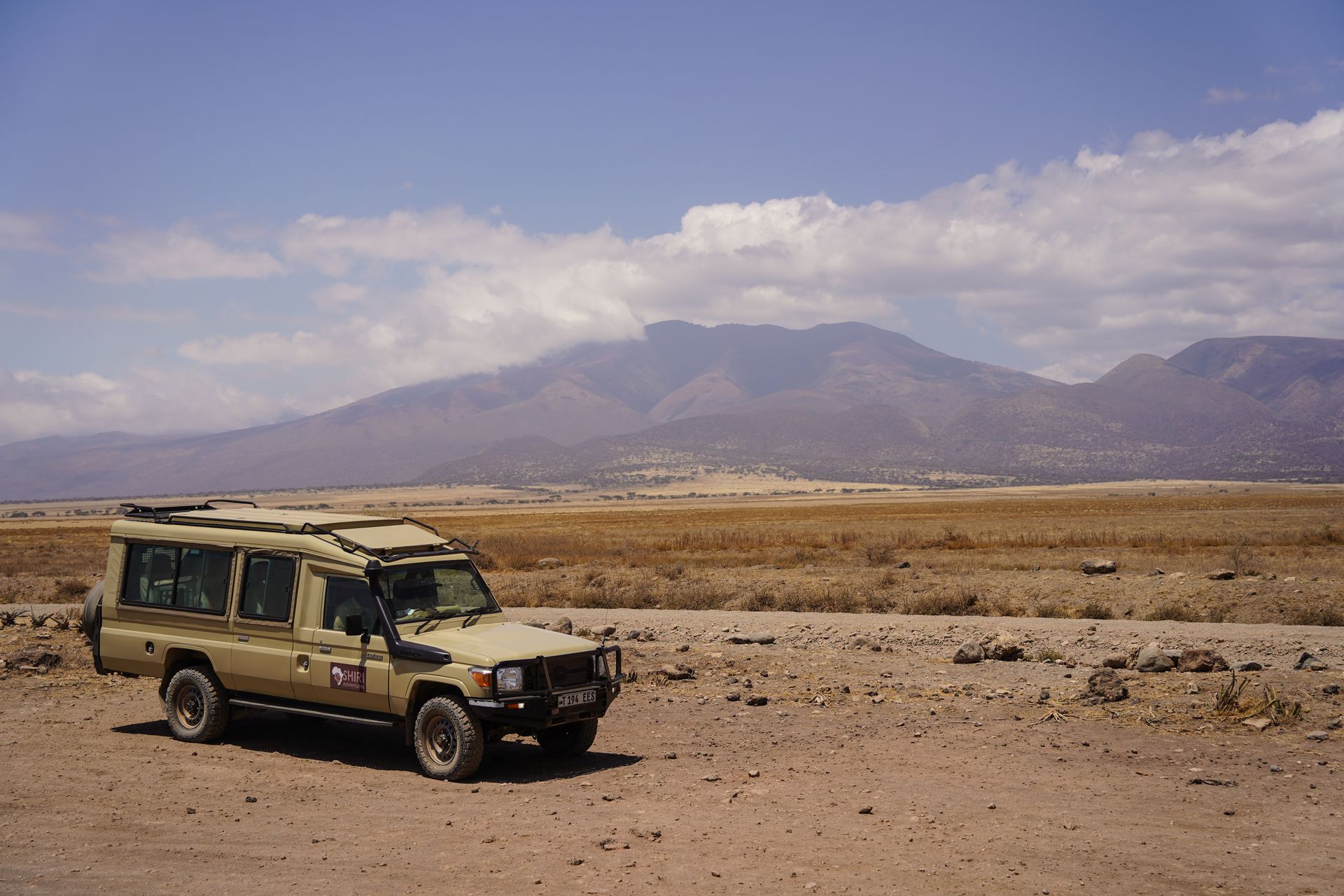
What is a typical day like on an African safari?
In my experience, a typical day on safari involves spending the majority of each day out on game drives and searching for wildlife.
Here is what a typical day on safari looked like for me:
- Breakfast at the safari lodge
- Drive around for a few hours
- A picnic lunch in a national park
- Drive around for a few more hours
- Dinner at the lodge and off to sleep
The exact times varied based on if we had to transit to other parks each day and you can certainly request whatever you’d like if you’re on a private safari. We really wanted to maximize our time and chances to see lots of wildlife, so we typically left between 7 AM and 9 AM, and made it to the lodges by 5 PM.
What should you wear on an African safari?
You’ll want to be cool and comfortable during your safari. It’s best to wear neutral colors, such as khaki and beige, so that you can blend in with your surroundings better. It’s specifically advised to avoid black or dark blue clothing because that can attract tsetse flies.
Should you go on a private safari or with a group?
Whether you go on a private safari or with a group depends on your budget, group size and goals. I was happy to be on a private safari because it gave us the ultimate freedom and flexibility to make our own schedule and spend as much time as we liked watching each animal. However, a group would be a way to meet new people and potentially save some money if you don’t mind having the schedule planned for you.
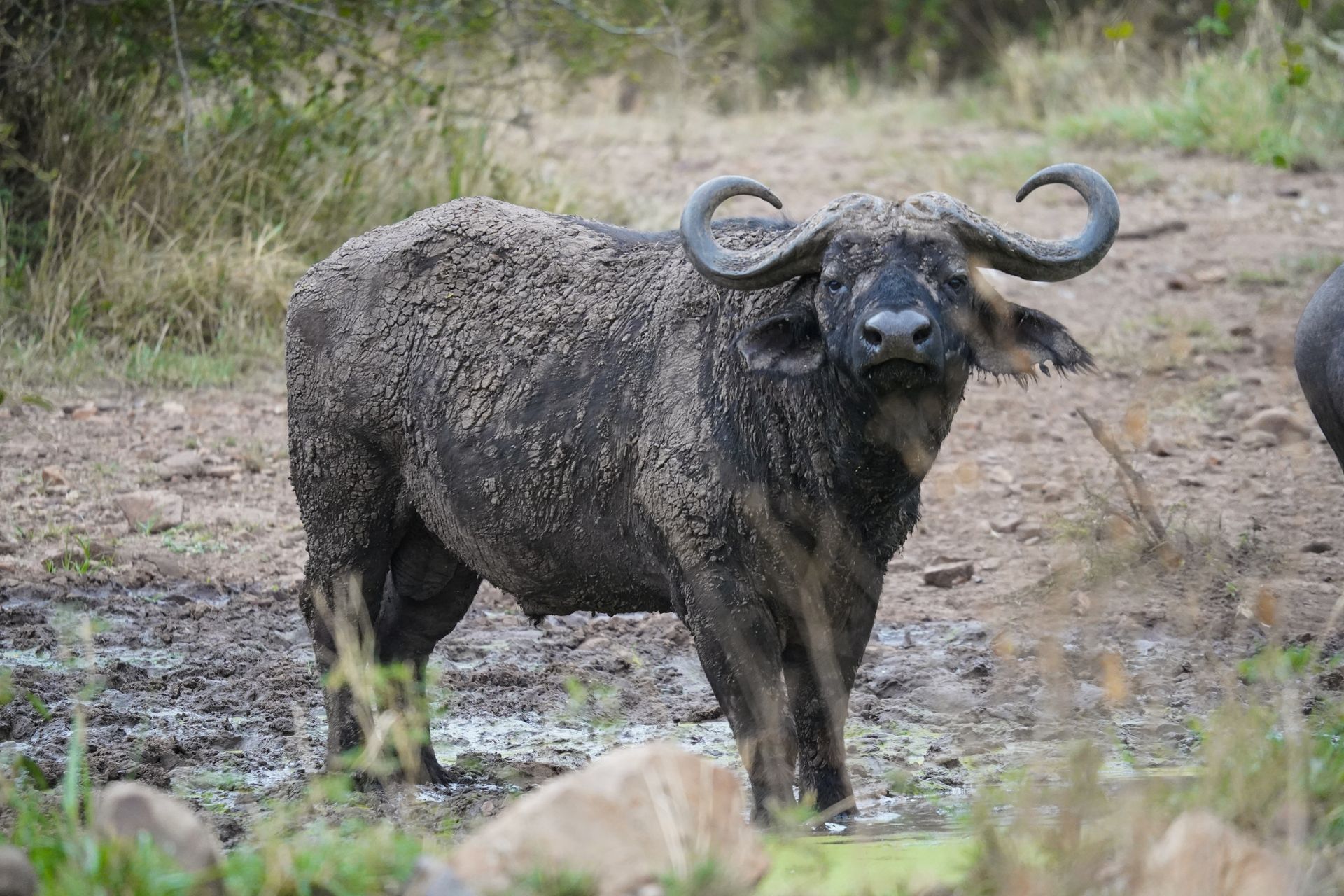
What are the African Big 5?
The “African Big Five” refers to lions, African buffalos, leopards, rhinoceros and elephants. The term originally comes from big-game hunters who felt these were the five most difficult animals in Africa to hunt on foot. Today, they are often the 5 animals that visitors most want to see on their Tanzania safari.
I saw all of the big 5 on my safari. The rhinoceros was the most rare and difficult to spot, but I got to see a few at Ngorongoro Crater (from a great distance).
How many days should you go on safari?
This can really vary depending on your travel style, how long you have and how many different national parks you’re planning to visit. If your travel style is fast paced like mine, I think that 4-5 days is perfect for seeing the most famous parks in Tanzania, including the Serengeti, Ngorongoro Crater, Tarangire National Park and more.
I was on safari for 5 days and was able to see all of the animals I wanted, and more. It would be nice to spend a little longer and visit additional national parks, but personally, I would rather add variety to my trip with other adventures such as the Kilimanjaro trek, a visit to Zanzibar or other activities.
How bumpy are the roads on a Tanzania safari?
Not all of the roads in Serengeti National Park are paved, so you’ll have a bit of a bumpy ride when you venture out there. Parts of my safari were bumpy, but it’s all part of the adventure.
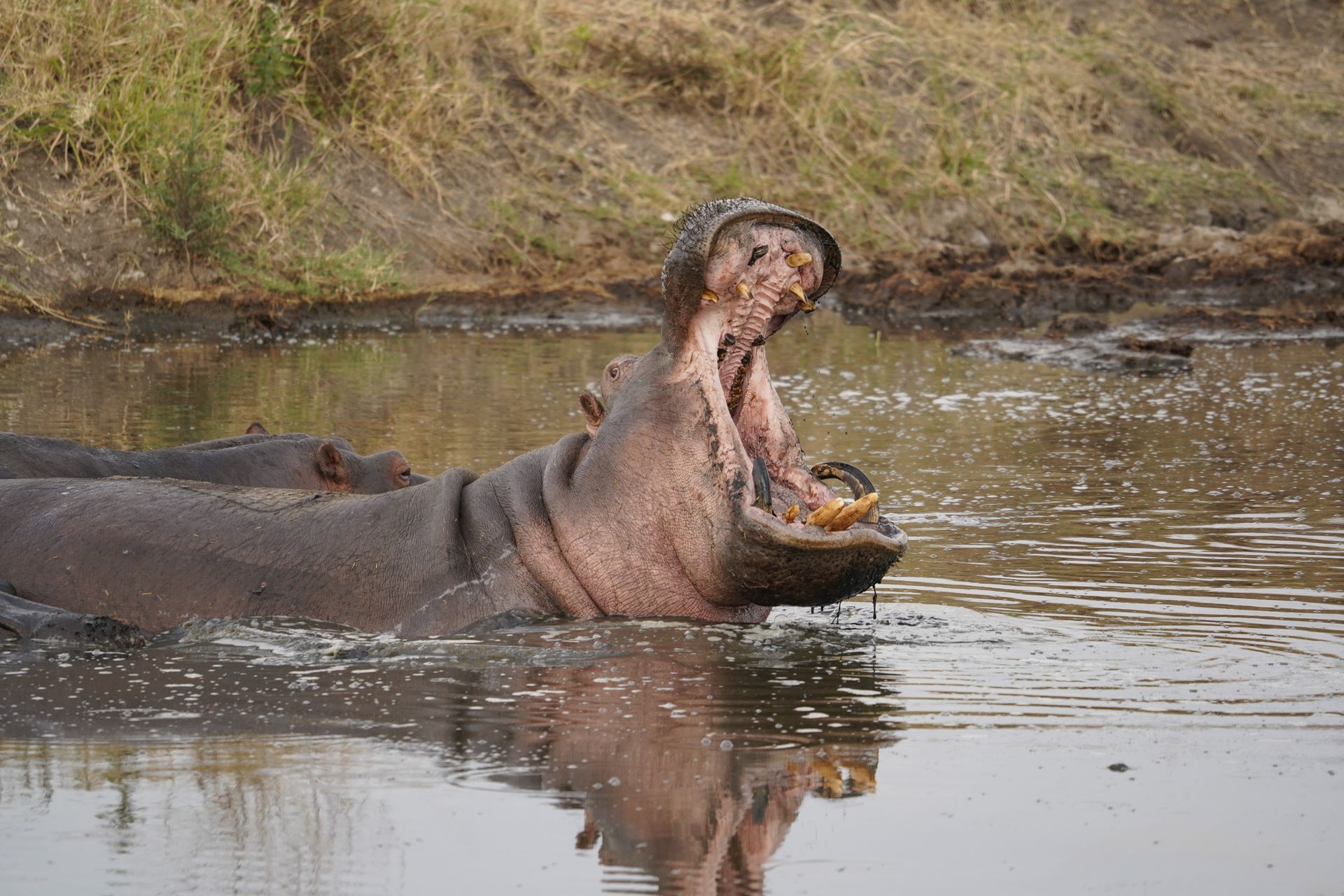
Do you need a guide for a Tanzania safari?
While it’s possible to do a self-guided safari in Tanzania, it can be quite challenging. Not only is it much more challenging logistically, but it will be much harder for you to figure out exactly where to go to see wildlife within each national park.
Our guide had years of experience and knew the many backroads within the national parks. Plus, the guides have radios where they share animal sightings with each other. We also saw one Jeep that actually flipped on its side on a tight turn (everyone was okay) and it was tourists who were on their own.
Personally, I definitely recommend going with a guide for your first safari. However, if you’re an experienced and adventurous traveler, it might be fun to do a future safari self-guided.
Why should you take a safari in Tanzania?
If you’re wondering which country to visit for your first safari, Tanzania, Botswana, Kenya, Namibia and South Africa are all great choices. Opinions vary on which is the best. Personally, I chose Tanzania so that I could also trek to the top of Mt Kilimanjaro!
From what I’ve read, Kenya and Tanzania are both really great countries for your first safari and both have great opportunities to see the Big 5. So you may want to decide based on which country has more convenient flight options, or on what other adventures you may want to add to your trip.
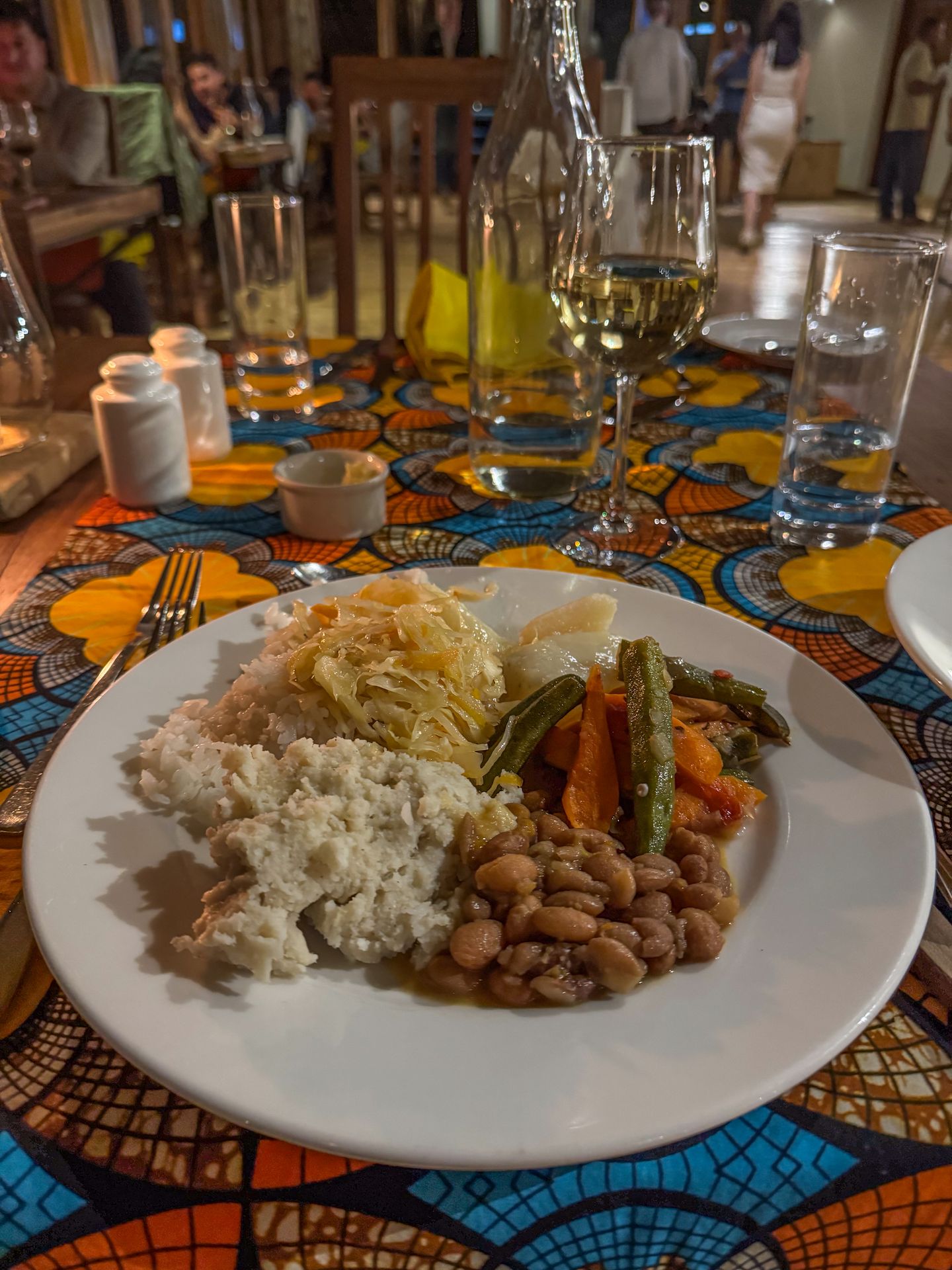
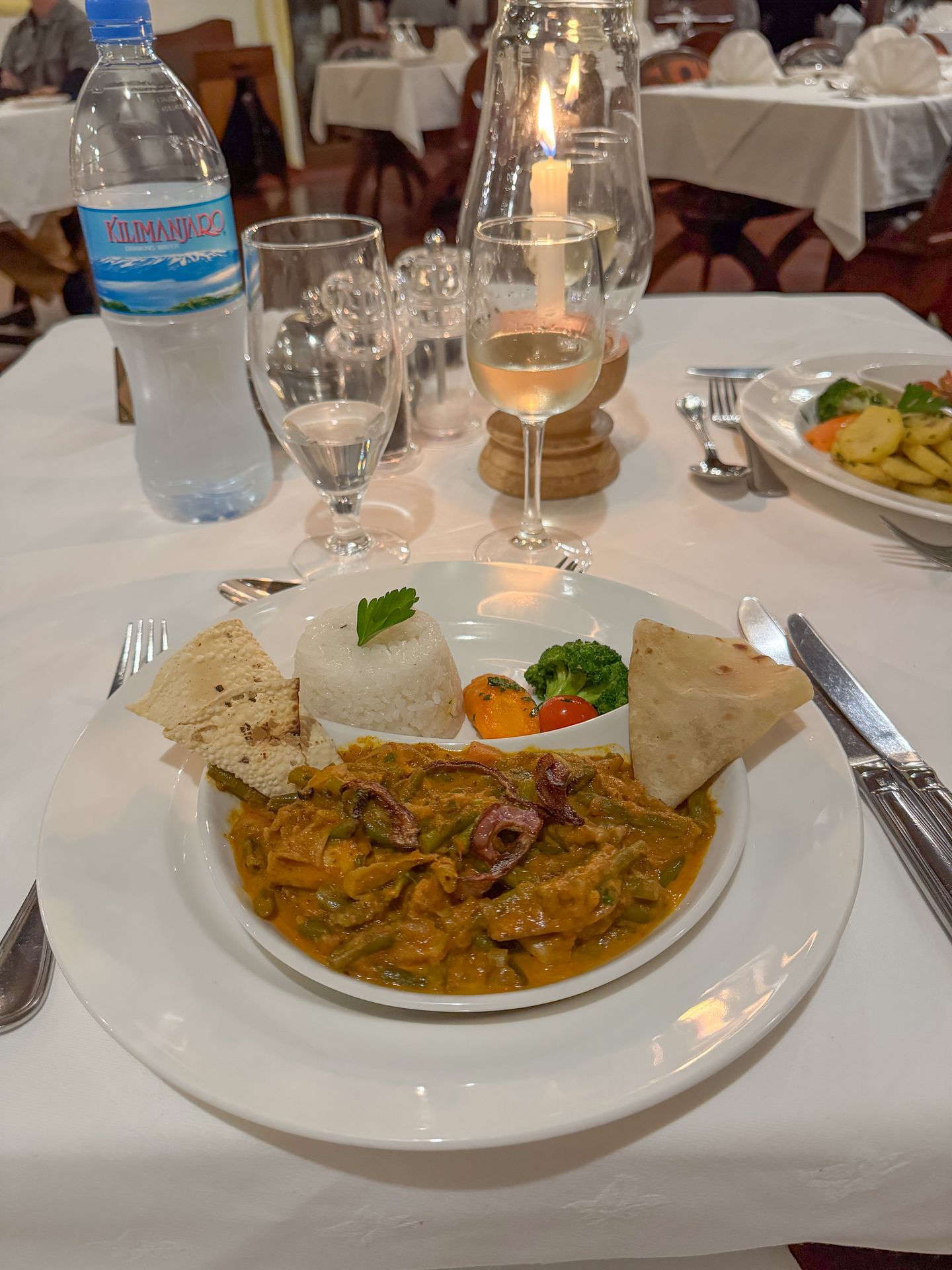
What is the food like on safari?
During my safari, we had breakfast and dinner at the safari lodges, and typically had a packed lunch each day that was provided by the lodge from the prior night.
Overall, the food was quite good. Most of the lodges provided buffet breakfasts and dinners, and options included curries, potatoes, vegetables, pastas and more. As a vegetarian, I always had plenty of options. The food is catered towards tourists (often coming from Europe and the United States), so you won’t necessarily find many local dishes at the lodges.
How much should you tip your safari guide?
Tipping will be expected for your guide, who you’ll likely spend several days with. It’s typically recommended to tip your guide $10-$20 per day. You’ll also want tip at the lodges, and you can typically give to a box at the front desk that will be shared among the staff.
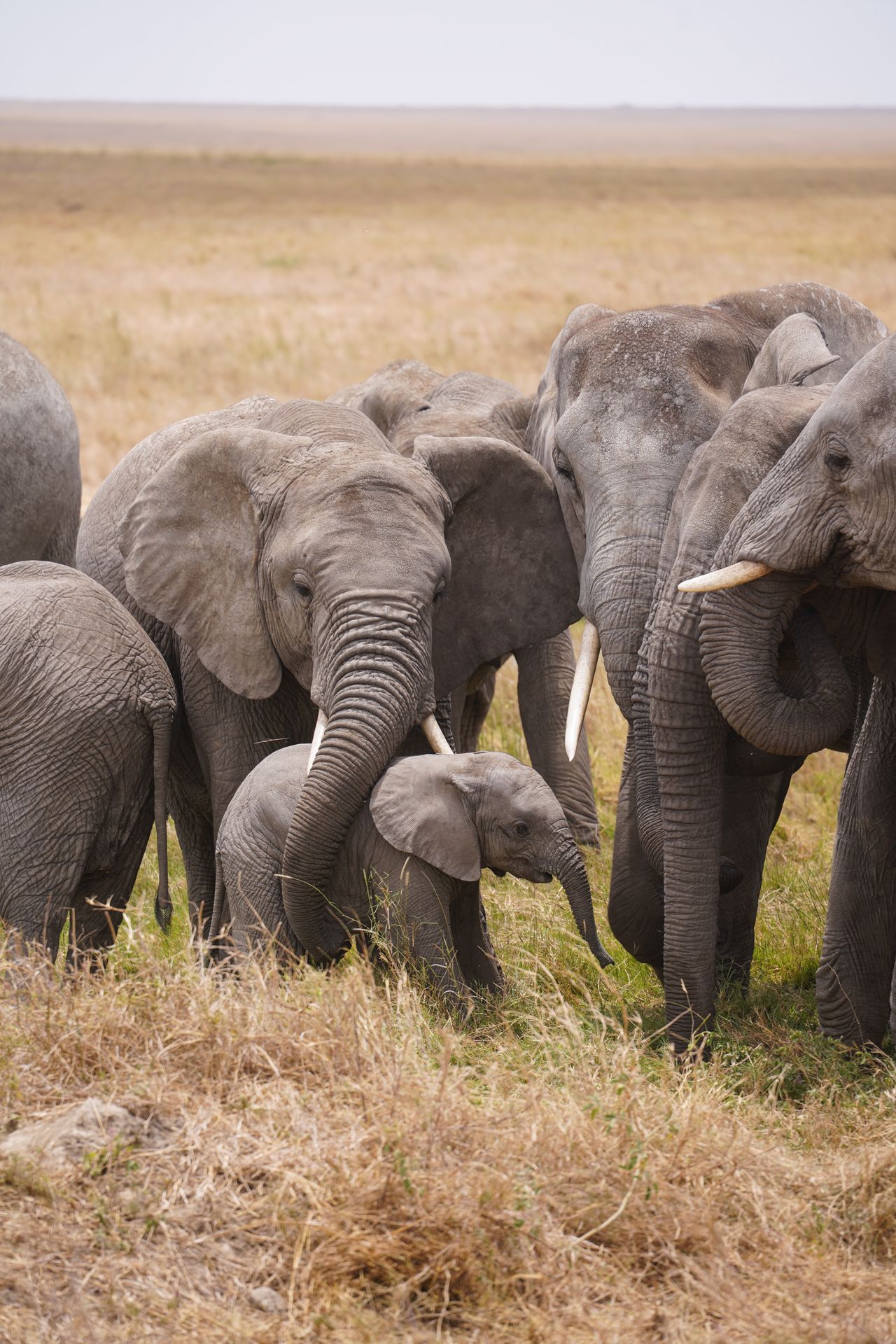
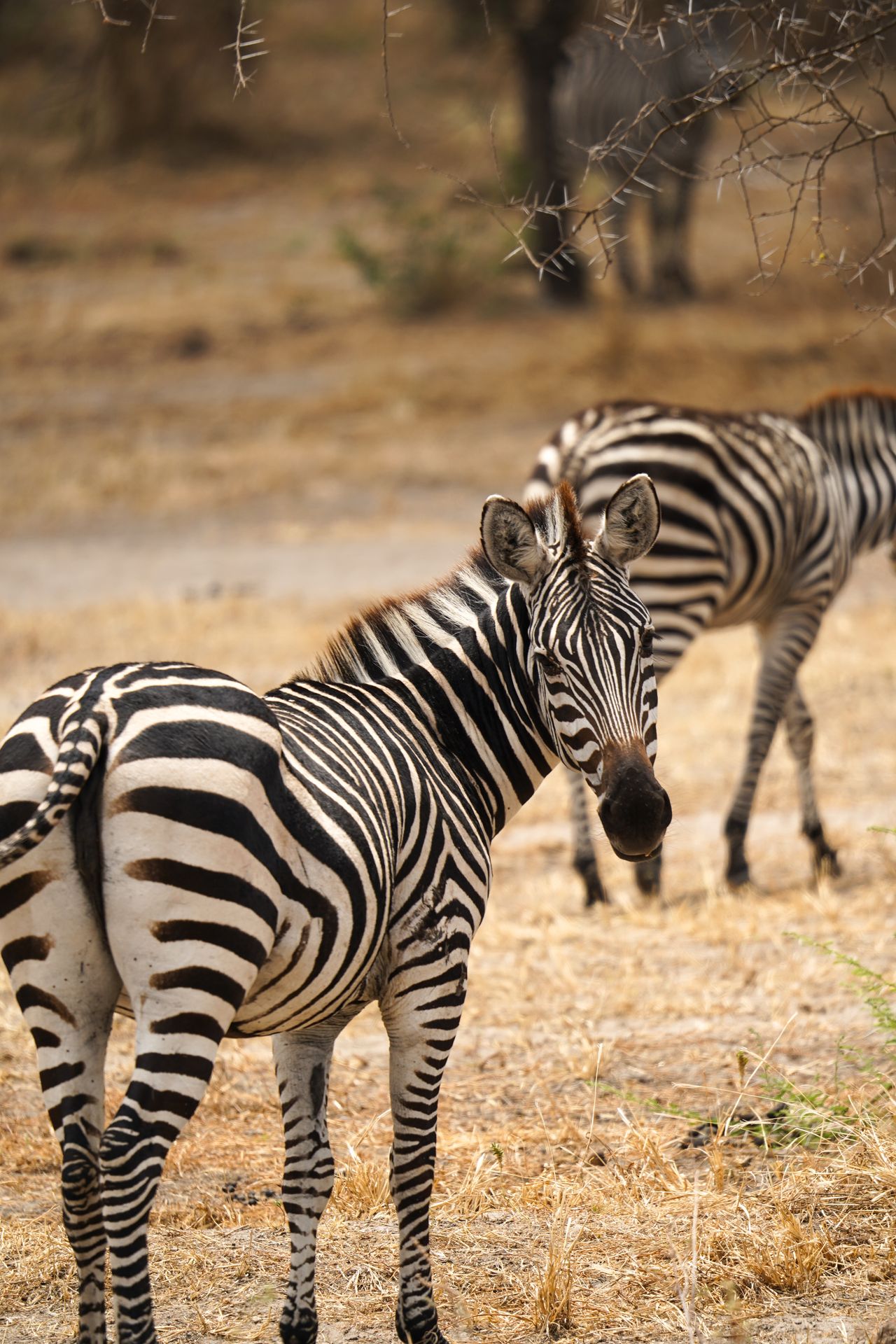
What are the bathroom options like during a safari?
I was pleasantly surprised with the amount of bathroom stops available in each of the national parks we visited. Each park had visitor centers and rest areas that had flush toilets. However, there were a few times where we had to pee and were in a remote area. In that case, they ask you to stay right next to the vehicle because of the dangerous wildlife that might be nearby. Your guide will likely be prepared with a “bathroom kit” for these cases.
How much does a safari cost?
African safaris can be very expensive, but it all depends on which company you go with, where you’re staying, and other factors. This was a honeymoon trip for us, so we splurged on nicer lodges, but there are also more budget friendly options. I recommend reaching out to multiple companies and getting multiple quotes.
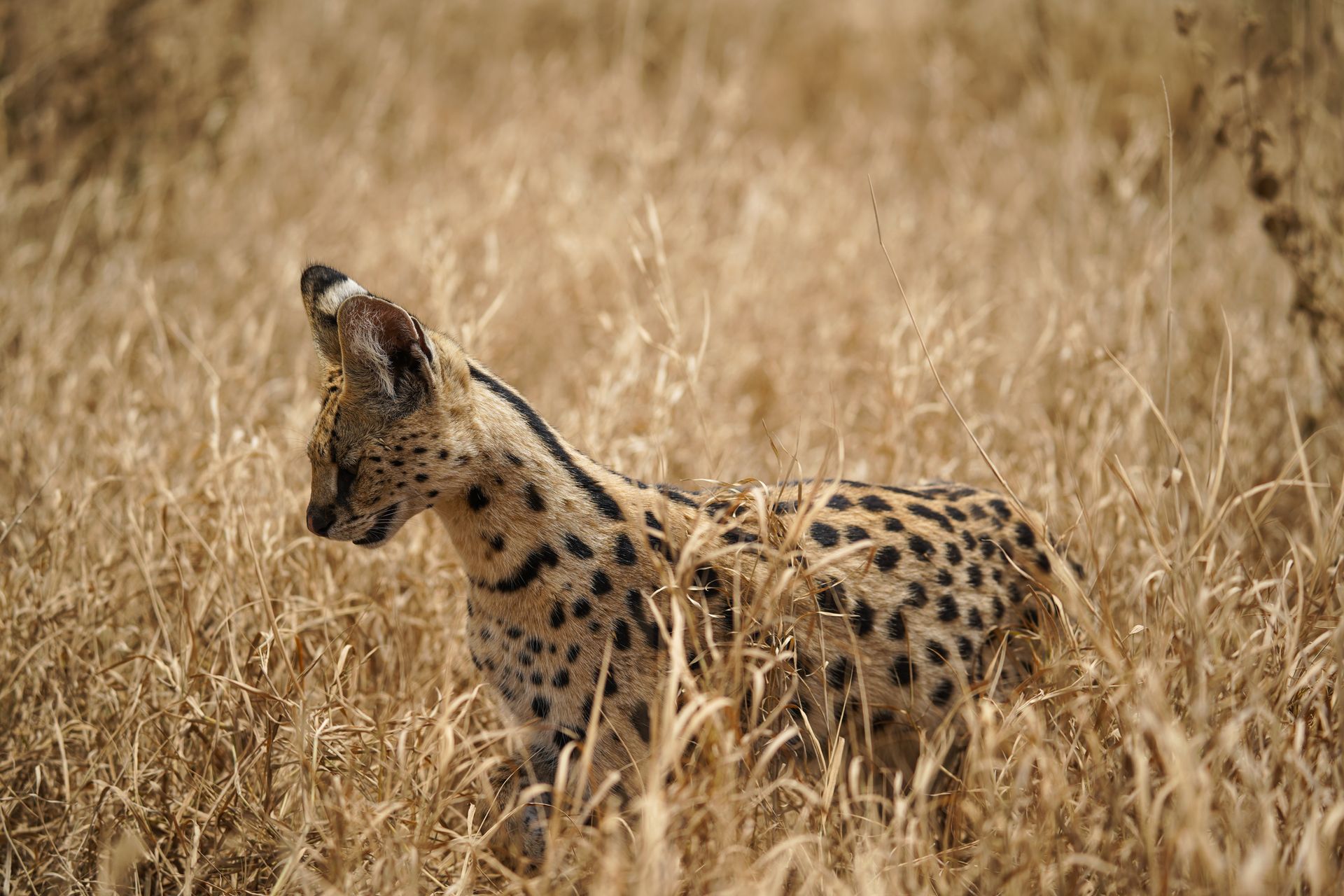
Tanzania Safari Itinerary (5 Days)
Typically, your operator will make your itinerary for you, but you can have as much input as you’d like if you’re going on a private safari. This was the itinerary that Shiri Adventures created for us, and my experience at each park and lodge.
Day One - Tarangire National Park
Most visitors will leave for their safari from Arusha, which is known as the Gateway to the northern region of Tanzania. However, if you hike Mt Kilimanjaro before your safari, you’ll probably leave from the smaller city of Moshi.
We started our safari at Tarangire National Park, which is one of the closest national parks to Arusha. This park is best known for its high density of elephants, and baobab trees.
Baobab trees have earned the nickname “The Tree of Life,” as their bark and fruit actually provide over 300 uses, including being food for elephants. These trees are fundamental to the African savannah and help to keep soil moist, slow soil erosion and help to recycle nutrients.
Fun Fact: Baobab trees act like giant sponges and soak up water. Elephants use them as a food source.
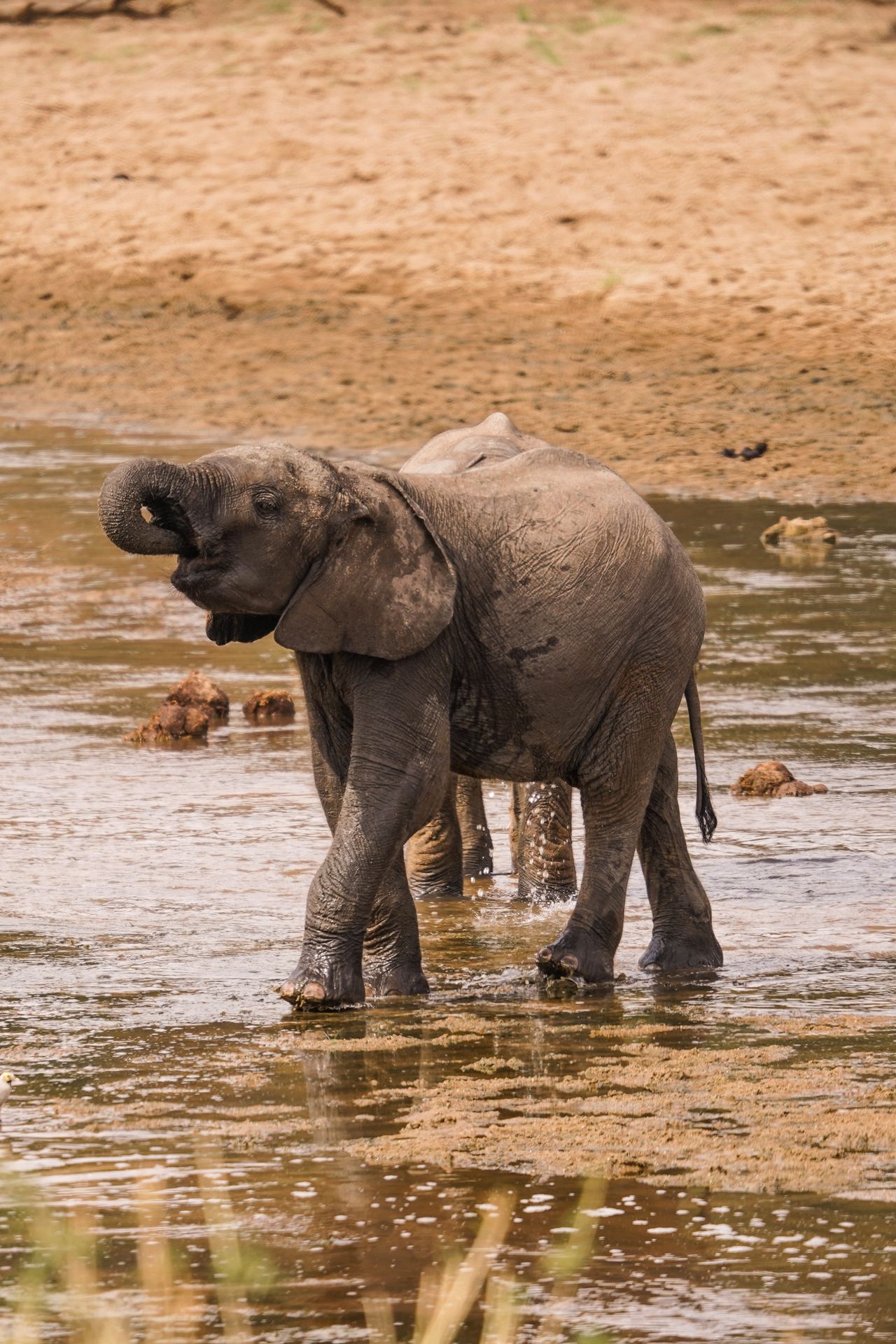
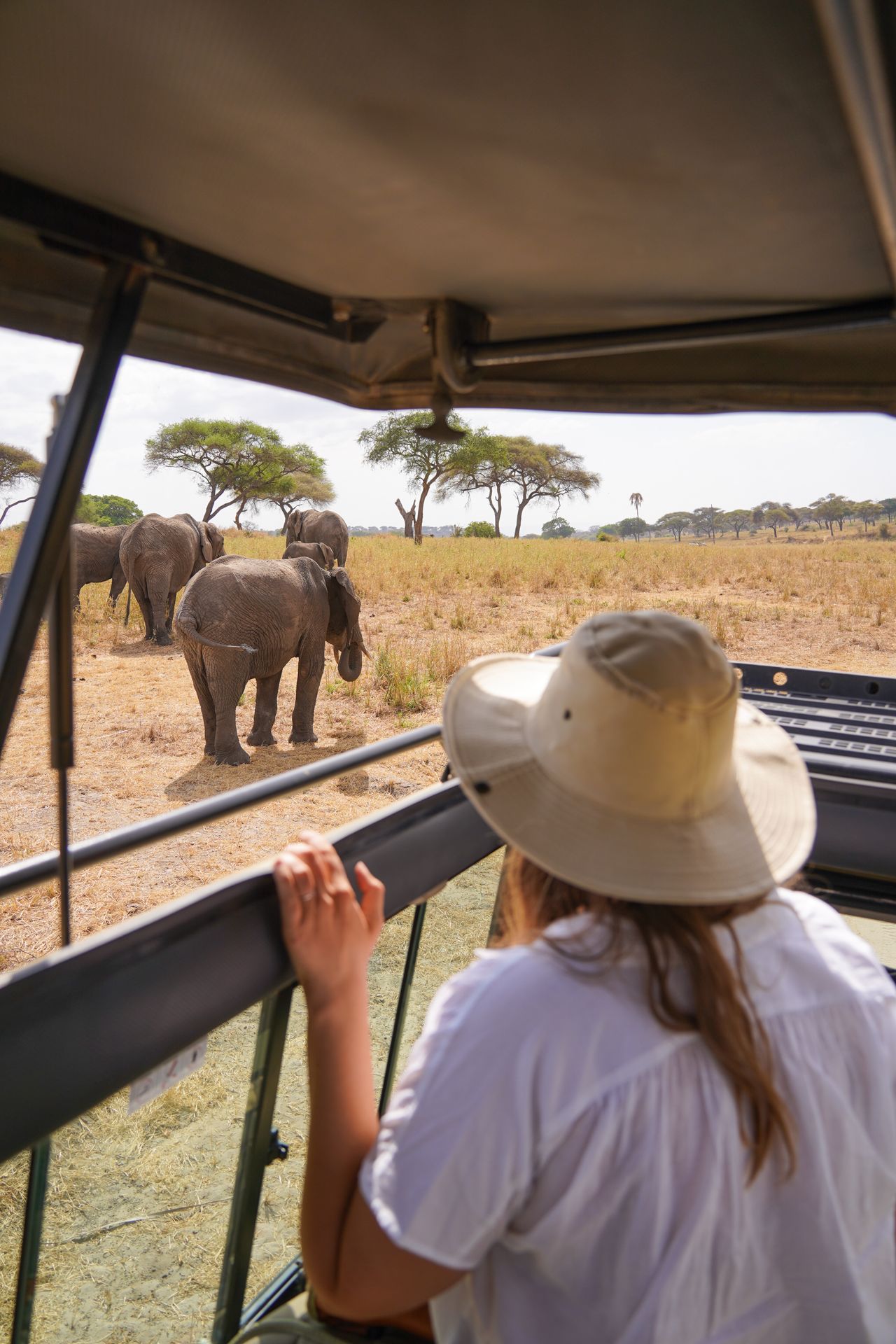
During my day in Tarangire National Park, we saw several elephants, zebras, waterbuck, giraffes, warthogs, monkeys, ostriches, wildebeest and more. One of the biggest highlights was watching elephants cross a river, and hang out next to the water. There was also a point where elephants crossed in front of our vehicle very close. This park is incredible if elephants are the top animal you’re hoping to see!
I also really loved the Matete Picnic area in Tarangire. The area had an amazing overlook of the Mto Tarangire River where we saw elephants crossing. The picnic area also was full of monkeys trying to steal food from tourists - please make sure not to feed wildlife!
Tarangire was an incredible park to kick off our safari. After a day in the park, we made our way to the Marera Valley Lodge for our first night. This lodge was a good halfway point between Tarangire and the Serengeti, where we’d be heading next.
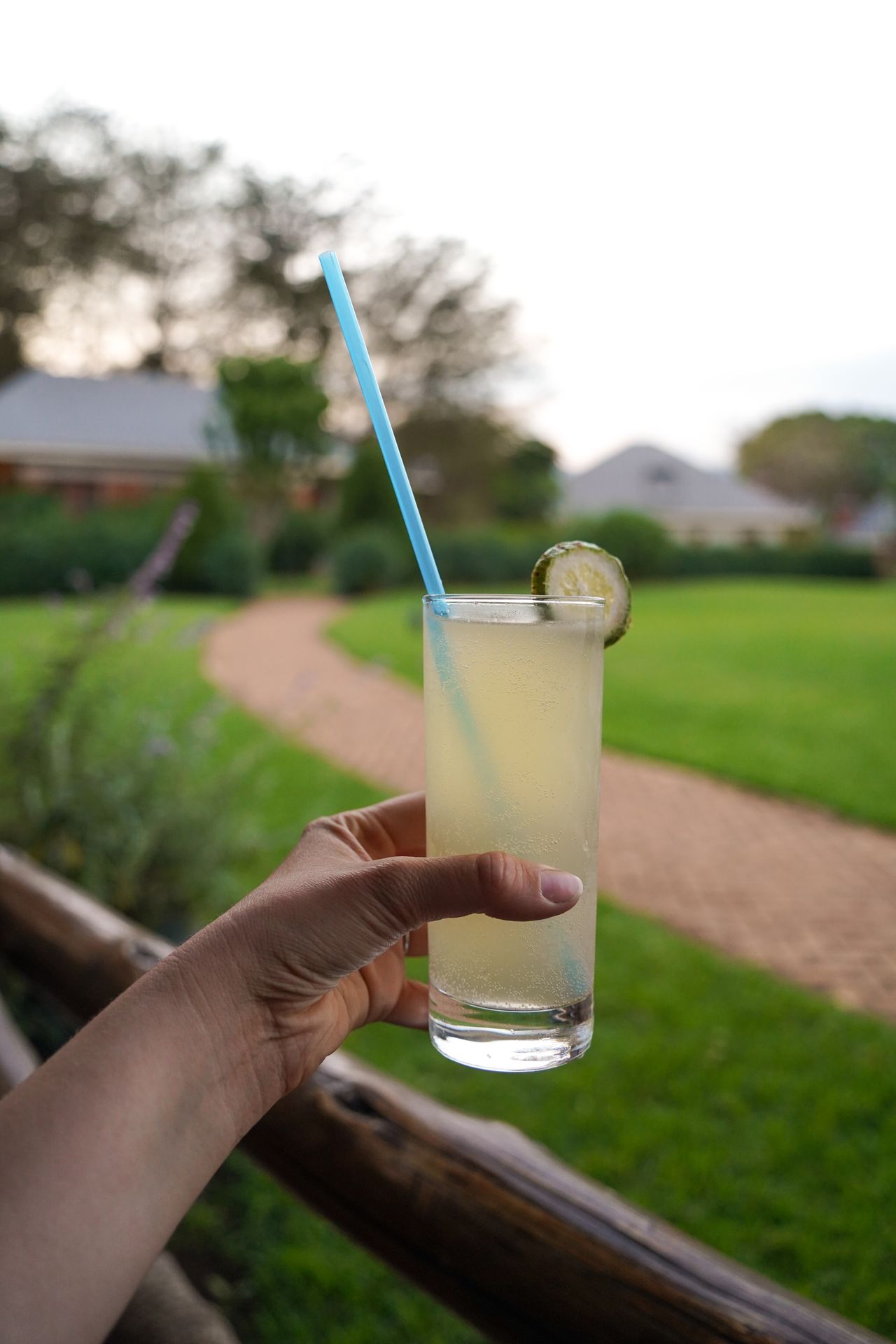
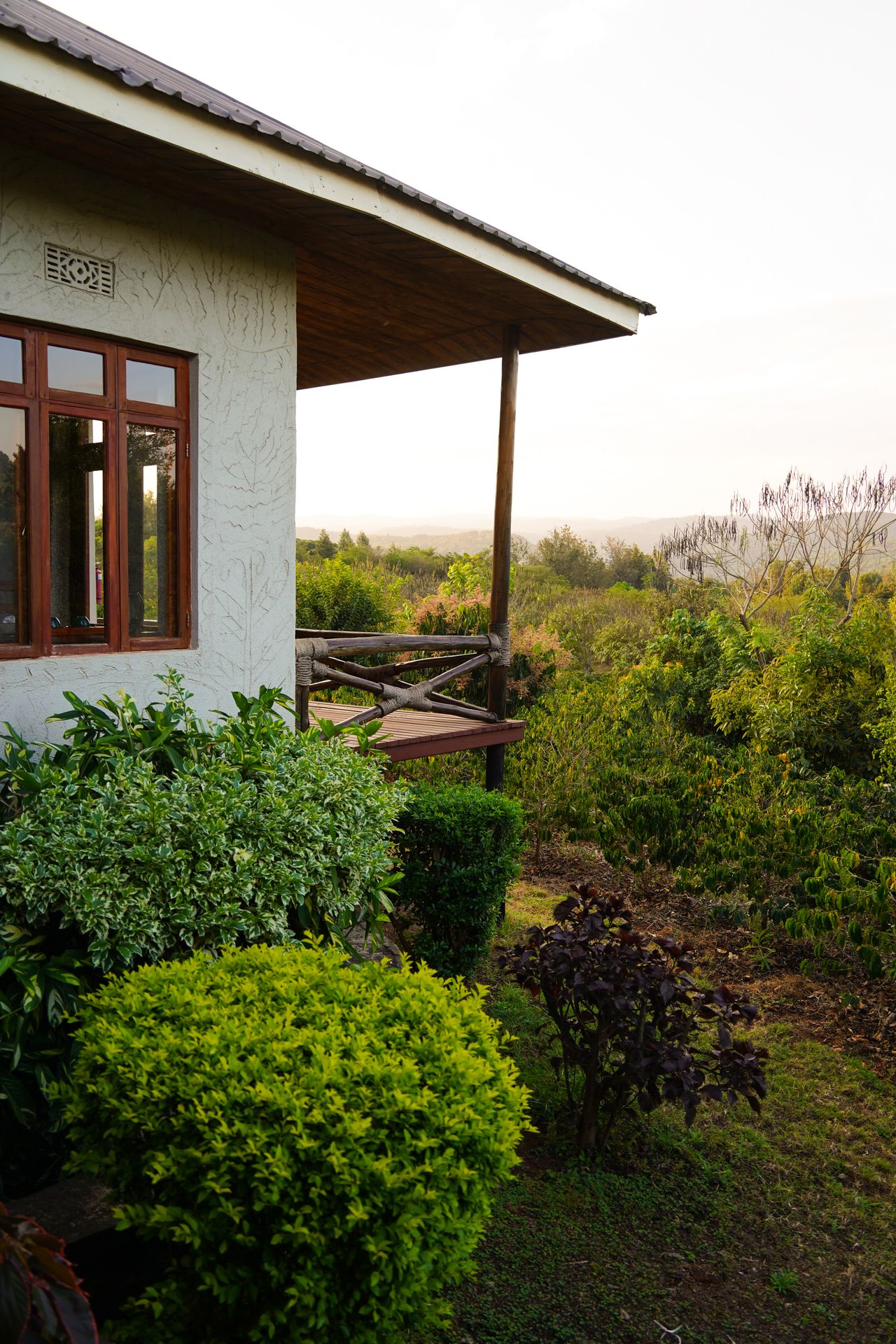
The Marera Valley Lodge is a beautiful hotel that has a series of little cottages and lots of lush greenery. There is a pool in the middle of the outdoor space and lovely views from the rooms. You’ll also see a lot of food being grown that is used in the kitchen.
Tip: Tipping is expected at the safari lodges and the staff is typically insistent on carrying your bags. We preferred to tip once to the front desk for everyone to split instead of tipping every individual, since we did not have many small bills. However, we felt pressured at certain lodges to tip for every interaction.
We had dinner at the lodges on each night of our safari. The dinners were typically a buffet or some kind of set menu. At the Marera Valley Lodge, soup and salad was served to your table, and then you got up to serve yourself from the buffet. The food here was quite good.
As a vegetarian, I had plenty of food options at every safari lodge. They tend to cater well to all types of diets.
Day Two - Serengeti National Park
On day two of my safari, we left the Marera Valley Lodge and drove to Serengeti National Park. We drove along the rim of the Ngorongoro Crater on our way there, but returned again on our way back to explore the inside of the crater.
It was a foggy and moody day as we drove along the crater rim, so we didn’t get any views. However, we did see an African buffalo along the road that quickly disappeared into the thick brush.
As you enter Ngorongoro and head to the Serengeti, you’re getting farther from civilization and it will be mostly dirt roads from here on out. The ride can be bumpy at times.
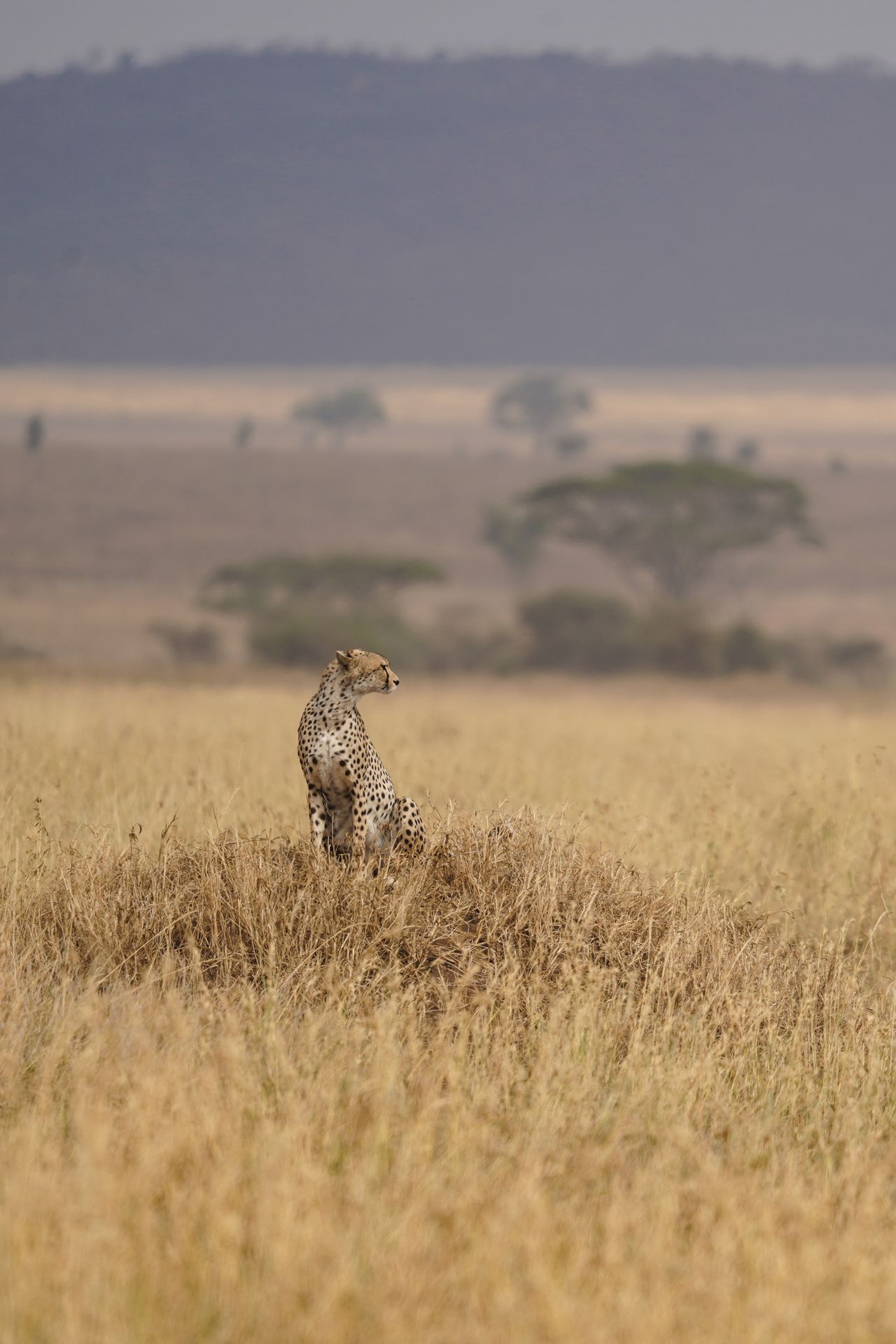
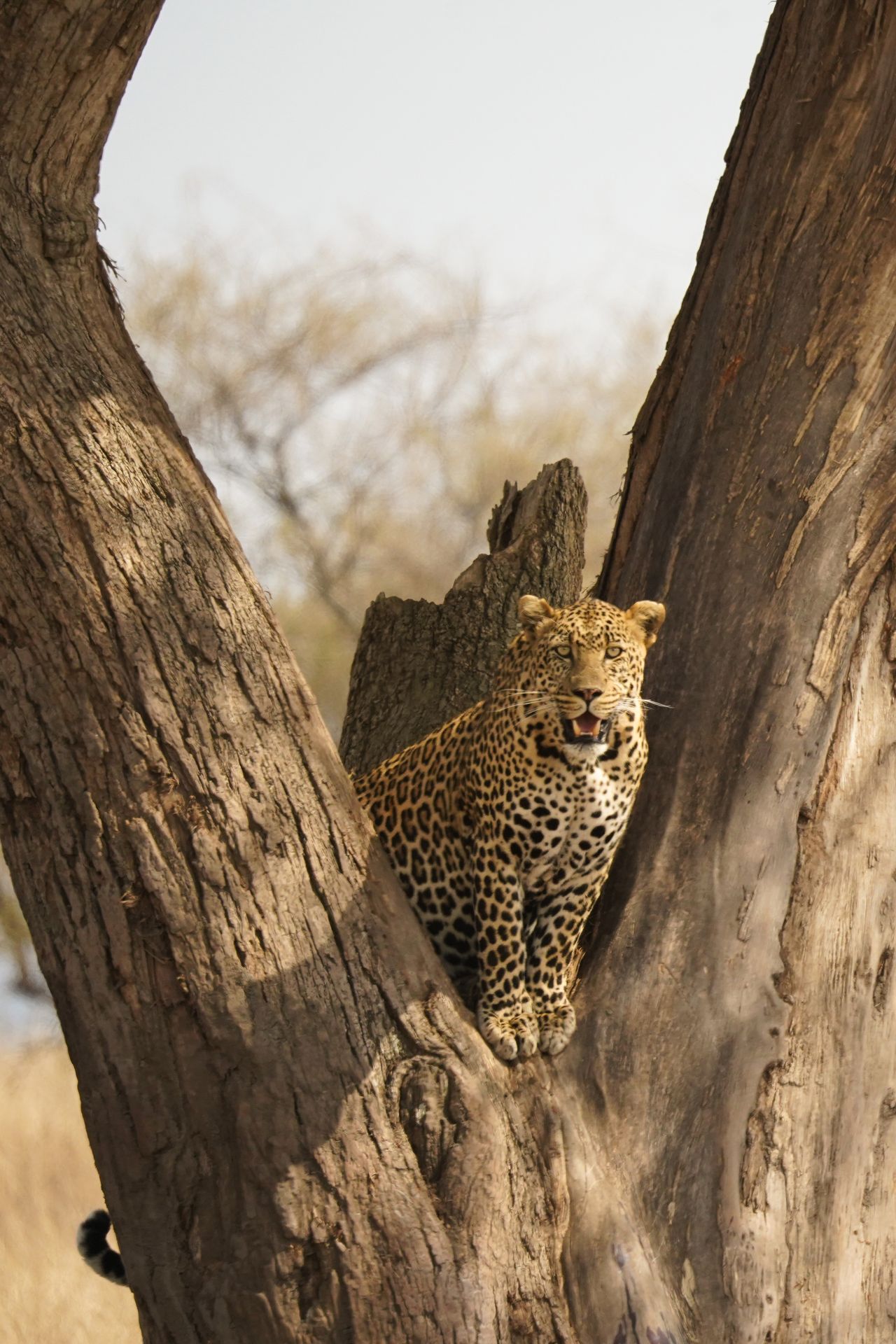
Serengeti National Park was my favorite park and the park where we spent the most time. The park stretches 5,700 square miles and is likely to remind you of The Lion King. We saw leopards lounging in trees, female lions with cubs, male lions relaxing in the tall grasses and hyenas hanging out in the shade. Plus, we saw multiple cheetahs, giraffes, monkeys, hippos, elephants, gazelles, dik-diks, African buffalos and more.
I’m not sure if it was luck, or if our guide was just really good at listening to the radio and driving fast to get us to more animal encounters, but I was amazed with the amount of wildlife we saw in a day and a half in this park.
One of my favorite moments of the entire safari was watching a cheetah spot a gazelle in the distance, start running after it and eventually catch its prey. Another amazing moment was seeing a serval cat pouch on its prey right next to the road. We also spent an amazing amount of time watching families of elephants (babies included) drinking and playing in the water.
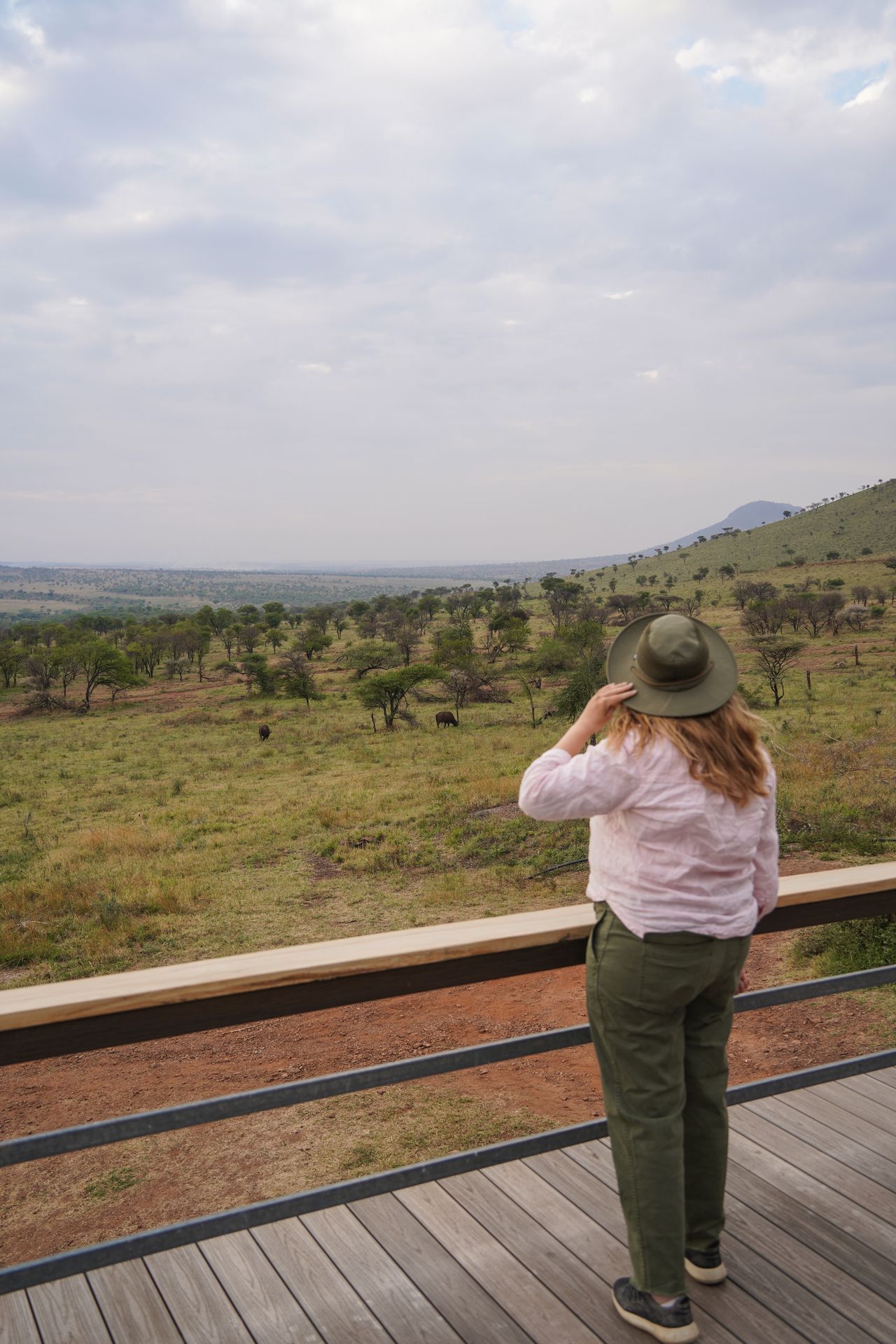
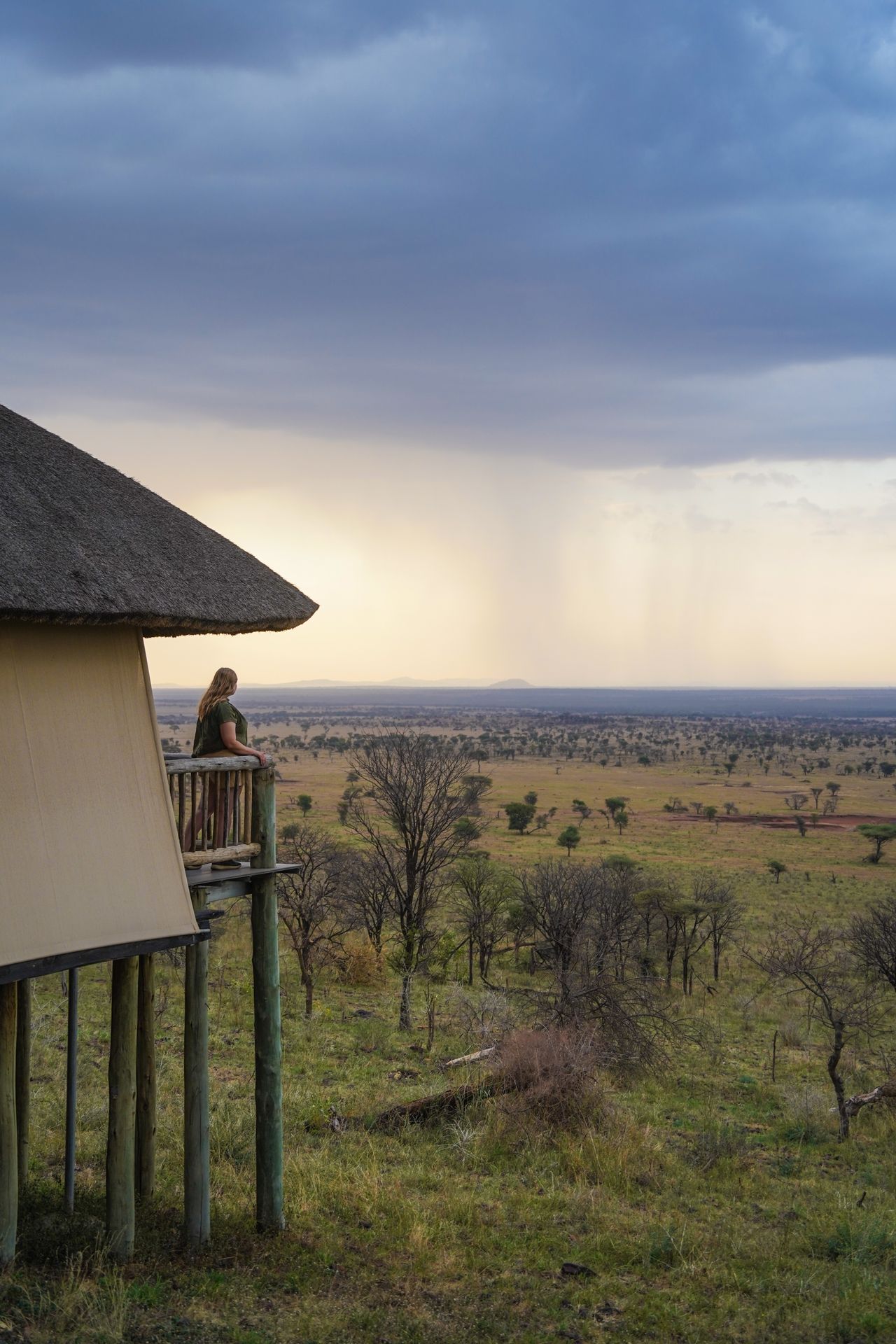
We stayed at the Kubu Kubu Tented Lodge for 2 nights in Serengeti National Park. This was the coolest place we stayed because you were centrally located inside of the national park. There are no fences and wildlife can come right up to your room, so Maasai Warriors had to walk us to and from our rooms after dark.
It was called a “tented” lodge, but it was quite luxurious. The “tents” are more like little cabins with open-air walls. Each room is built on a raised wood platform and has a balcony and an outdoor shower. We got to see elephants and buffalos from our balcony, which was incredible!
The center of the lodge, where food is served, has an infinity pool and large deck area that is perfect for enjoying a drink.
Day Three - Serengeti National Park
We spent all of day three exploring Serengeti National Park and stayed again at the Kubu Kubu Tented Lodge. I certainly think it’s worth it to spend a couple days in Serengeti National Park, as the park is huge and there are endless opportunities for wildlife sightings.
Our guide, Laurent, was fantastic. Check out his fun videos on Tik Tok!
Day Four - Ngorongoro Conservation Area
On day four of our African safari, we made our way to the Ngorongoro Crater. There are some great viewpoints to see the crater from above, but then you’re able to drive down to the bottom. The Ngorongoro Crater is a volcanic caldera that is about 100 square miles.
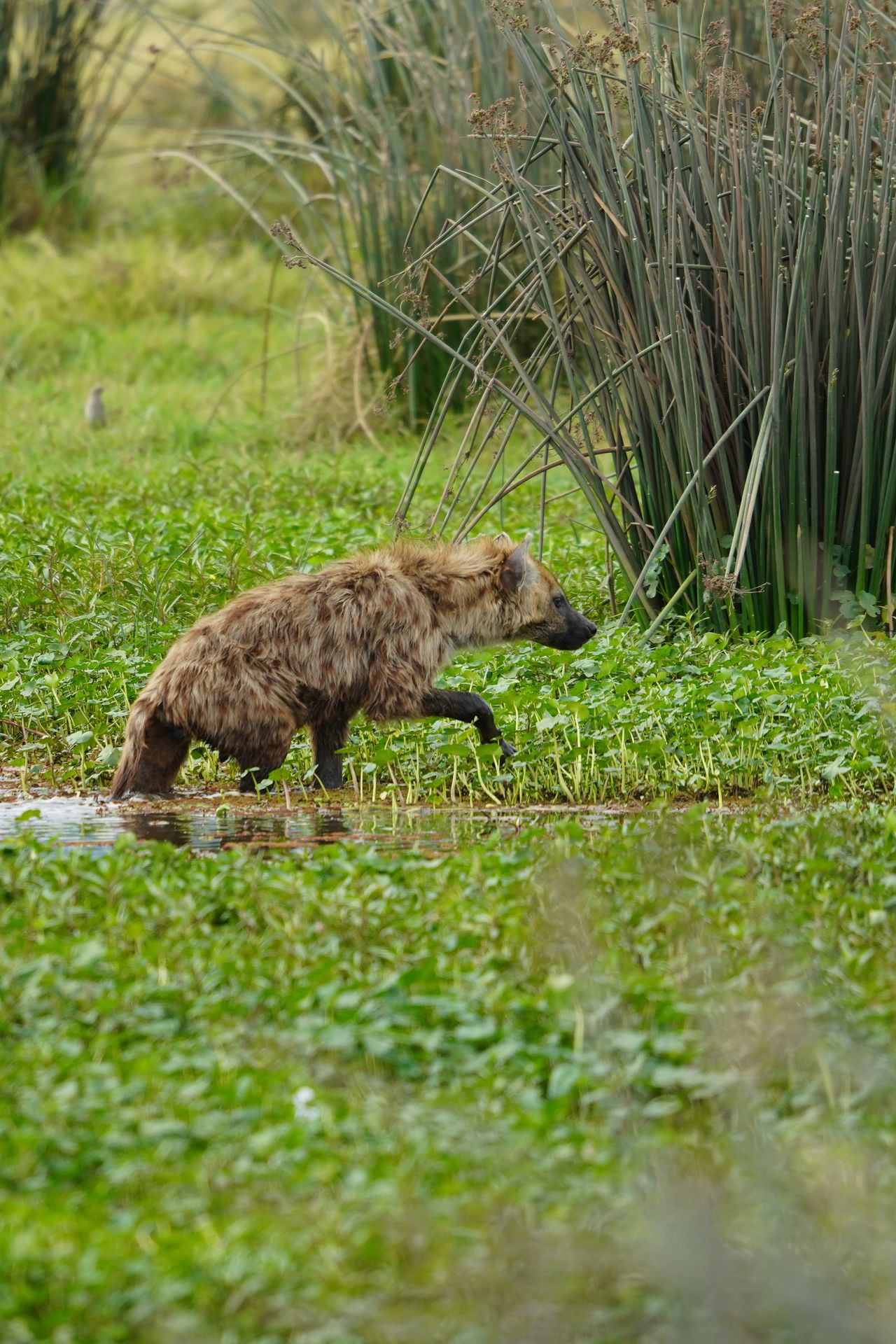
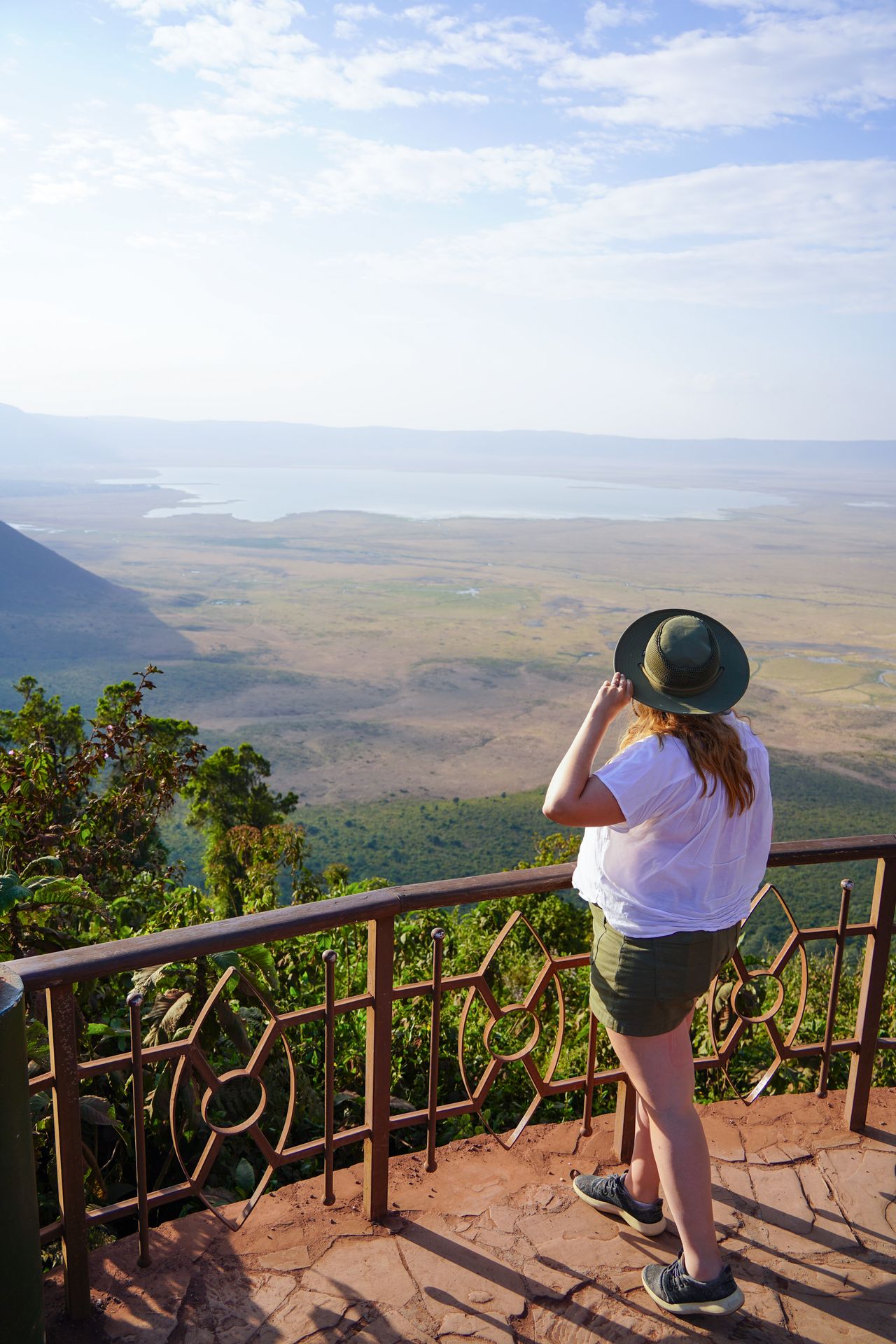
Fun Fact: Ngorongoro Crater is the world’s largest unbroken and inactive volcanic caldera!
This is such a unique park because there is a very high density of animals within the crater. It’s also very lush and green with a large lake in the center.
We saw lions, buffalo, gazelles, zebras, hyenas, ostriches, flamingos and more. It was a cool contrast to see these animals among green brush instead of the yellow grasses we had seen in the Serengeti and Tarangire.
But the biggest highlight was seeing rhinoceros! This was where we saw the 5th animal in the “African Big 5.” We actually saw 4 different rhinoceros, but they were at a great distance. Rhinos are the most rare of the Big 5 in Tanzania and are critically endangered. They also tend to be shy and elusive. So it was amazing to get to see multiple of them on one of our last days.
This park felt so unique compared to the others, and I think it should be a must on your Tanzania Safari itinerary.
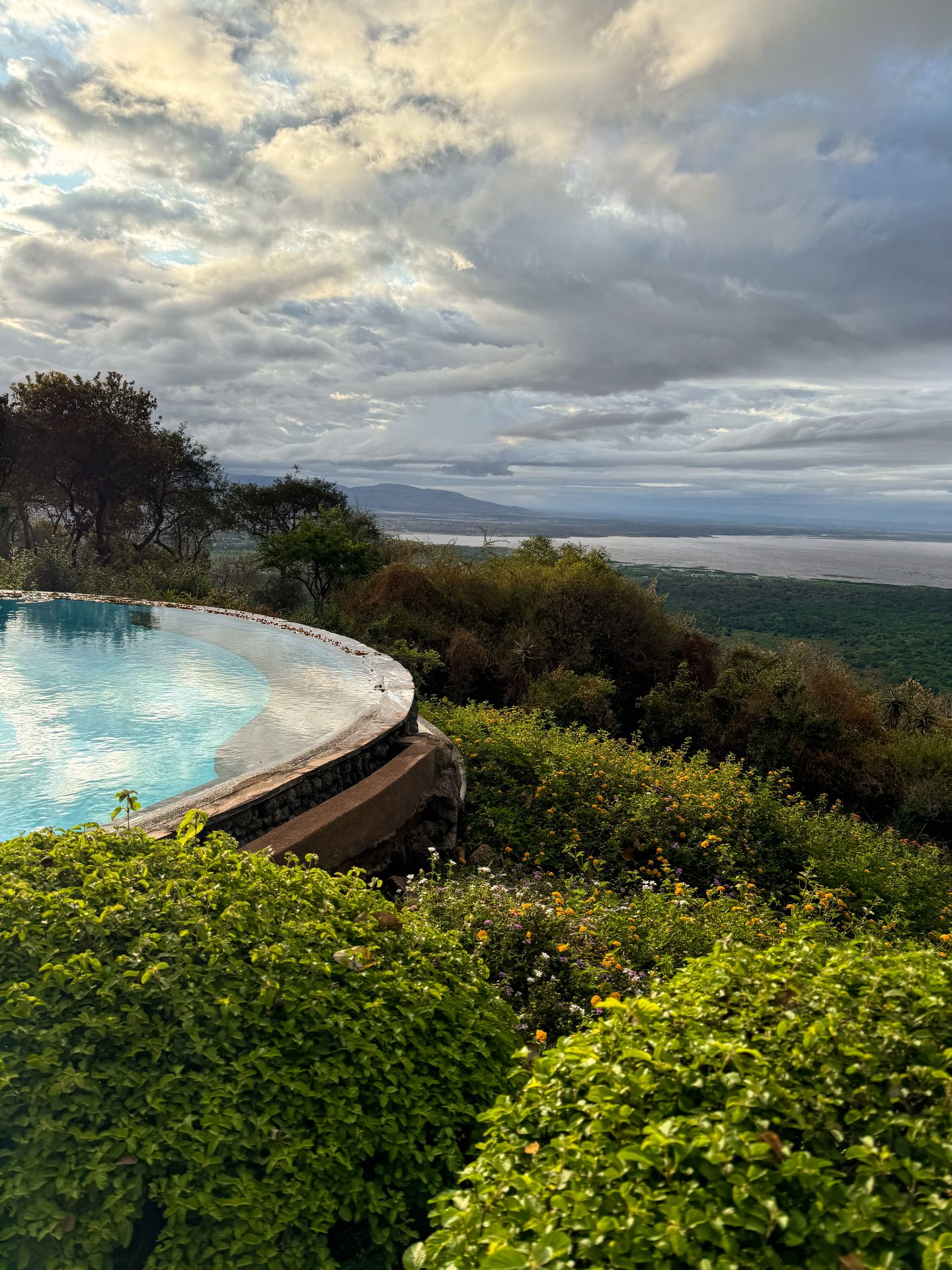
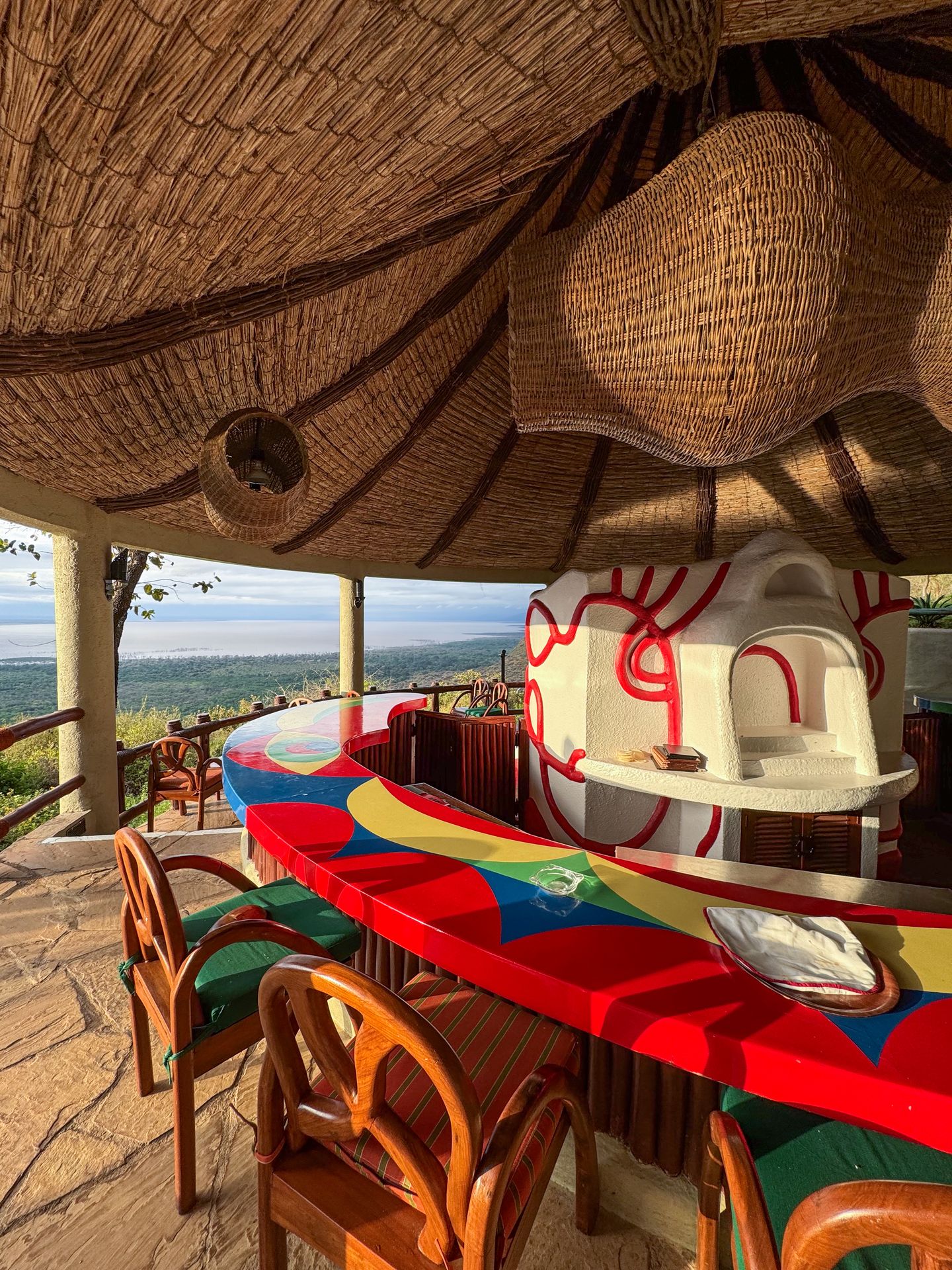
After exploring Ngorongoro Conservation Area, we stayed at the Serena Lake Manyara Lodge. The lodge had incredible views overlooking Lake Manyara, which would be our final stop on the safari the following day.
Lake Manyara Serena Safari Lodge also has a beautiful view and puts on a nightly show. It was also the fanciest dinner we had at the safari lodges, and I enjoyed a delicious mushroom curry.
Day Five - Lake Manyara National Park
On our final day of safari, we visited Lake Manyara National Park. Characterized by a large lake and dense jungle, it felt unique to all of the others. It was also by far the least crowded park we visited on our safari.
One of the biggest highlights of this park was watching huge groups of baboons, including lots of babies. There was one point where there were at least 30 of them walking on the road in front of us. We also saw elephants (including babies up close), lions and hippos here. And we saw a large lizard, which was a new sighting for the trip.
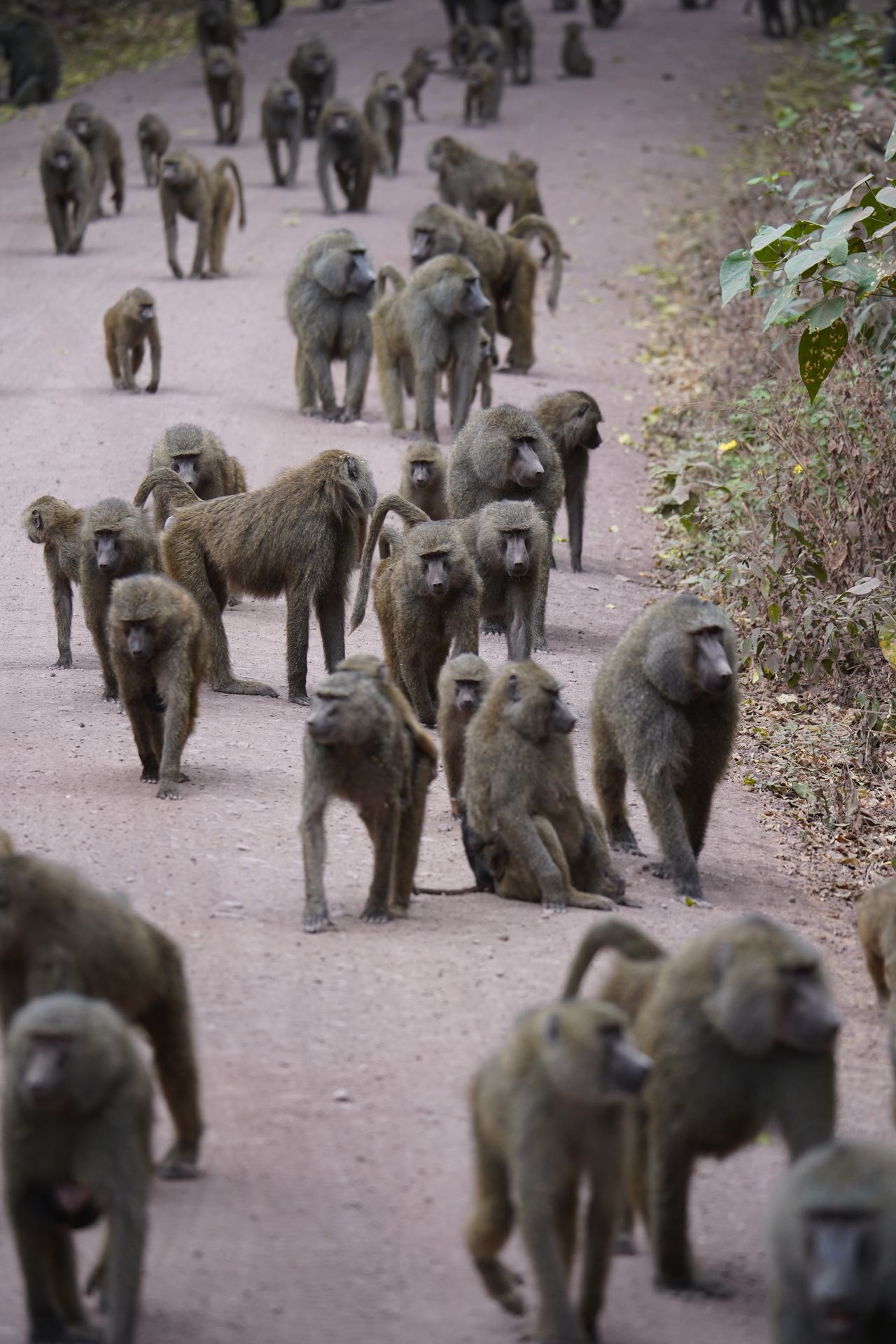
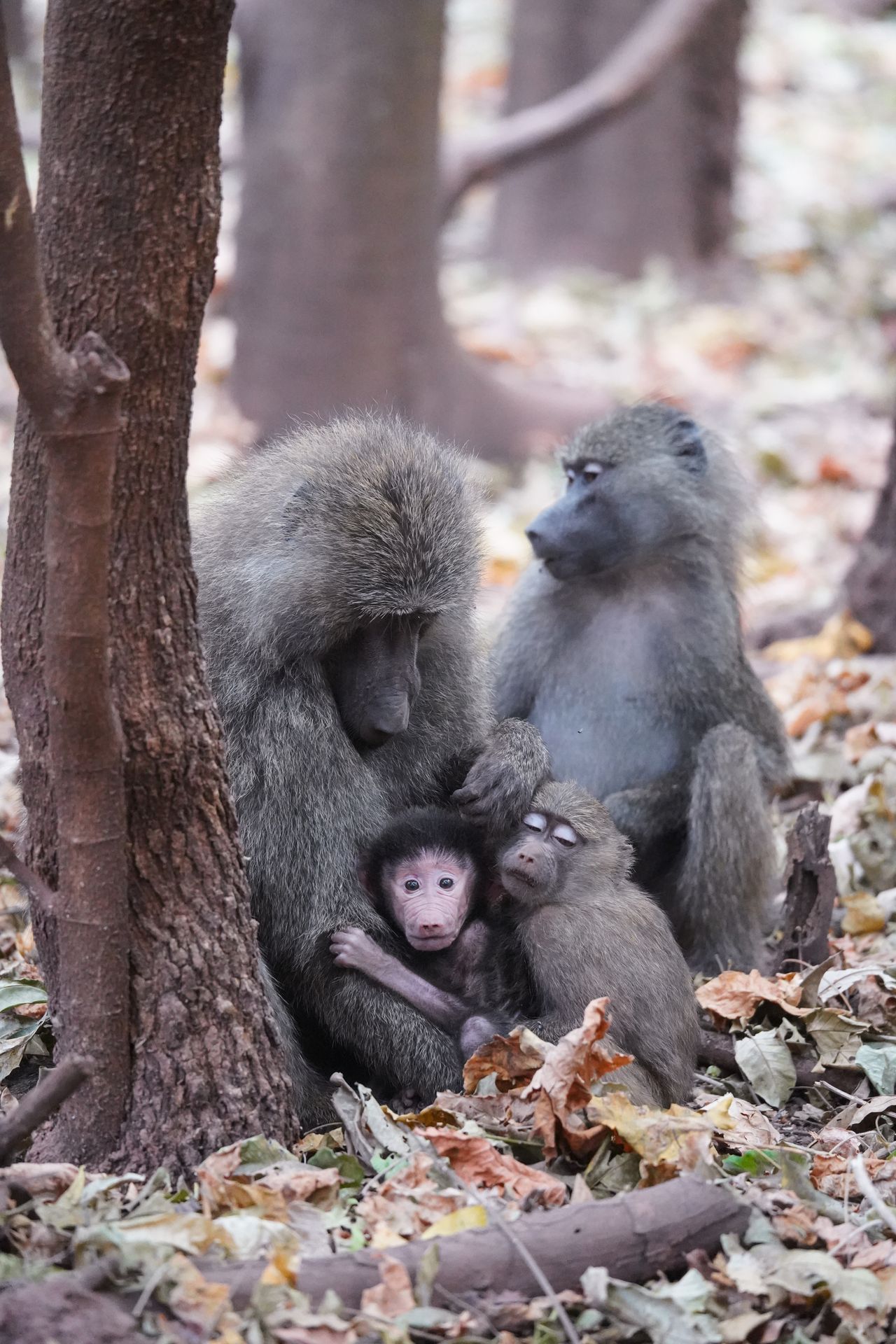
Lake Manyara is known for its tree climbing lions. We did not see any lions climbing trees, but we did see some lions relaxing next to the river bed.
After 5 days, our safari came to an end. However, we stopped to visit a Maasai Family on our way back to Arusha. The Maasai are a semi-nomadic people who are known for their distinct lifestyle and culture. They stay somewhat isolated from the modern world and raise cattle, live in huts and have large families (where the men often have multiple wives).
It was a really cool experience to get to visit a family and learn about the Maasai. They danced, made fire, showed us inside their huts and more. However, keep in mind that a visit costs a fee, and they will also ask you to purchase souvenirs in addition to the fee.
We stayed our final night in Tanzania in Arusha at the Gran Melia Hotel. Hotel Gran Melia is a 5-star hotel with fantastic views of Mount Meru. The property has a large pool surrounded by gardens and multiple restaurants to choose from.
We LOVED the food at this hotel. The dinner buffet at Saba Saba had so many options, including the best butternut squash soup that I’ve ever had. There was a mix of African cuisine, plus international options. Something for everyone. We were equally impressed with the giant breakfast buffet that had all sorts of choices, from pastries to potatoes to beans, and everything in between.
This is one of the only 5-star hotels we’ve stayed in, but we were quite impressed. It’s a great place to end your trip in Tanzania.
Final Thoughts
I hope this guide gives you ideas for your Tanzania safari itinerary, and helps you learn what to expect for your first African safari! It’s truly a bucket list experience that you’ll never forget. From lions to hippos, it was incredible to see so many animals in their natural habitat. Whether you’re considering a safari for your honeymoon, a trip with family or otherwise, I certainly think it’s worth the cost.
For more bucket list hikes and adventures around the world, check out these guides:
- Things To Know Before Hiking Kilimanjaro
- What to Pack for Climbing Mt Kilimanjaro
- The Ultimate Guide to Hiking the W Trek in Patagonia
- The Best Things To Do in Madeira, Portugal
- A Guide to Visiting Banff in May
- The Ultimate Utah Mighty 5 Road Trip
- The Best Things To Do in Yellowstone National Park
Thanks for Reading!
Let's stay in touch!
Join the Lost with Lydia email list to get monthly travel guides and tips!
